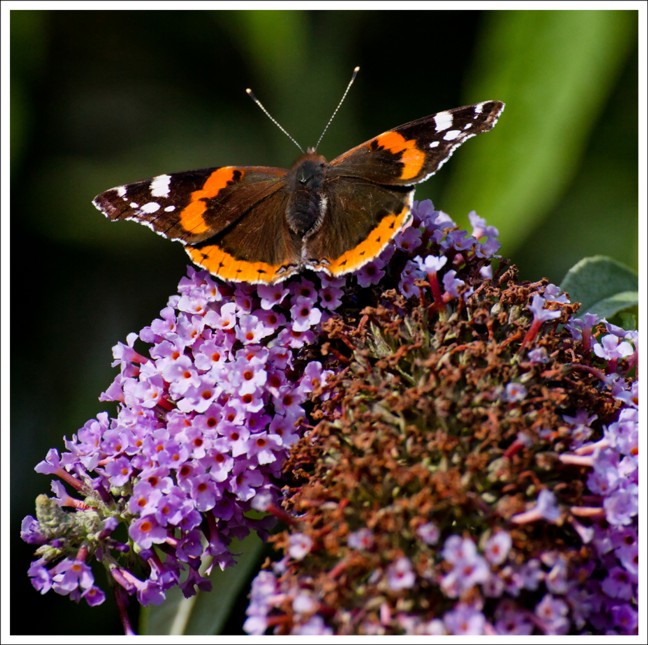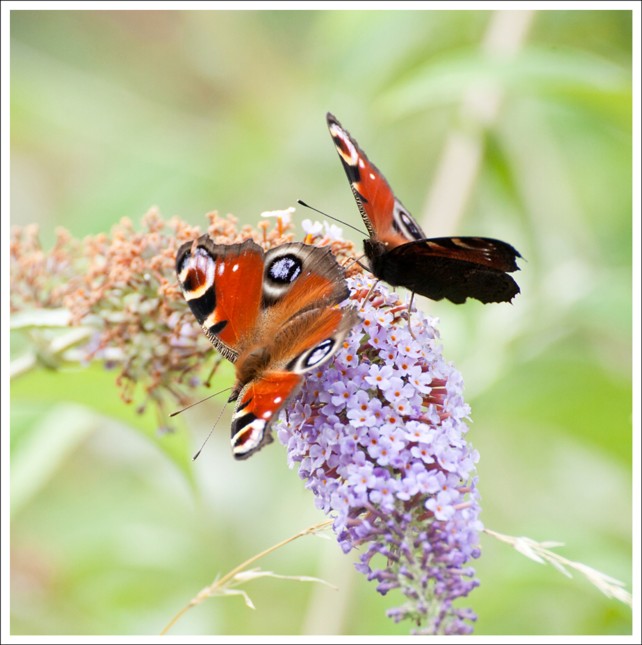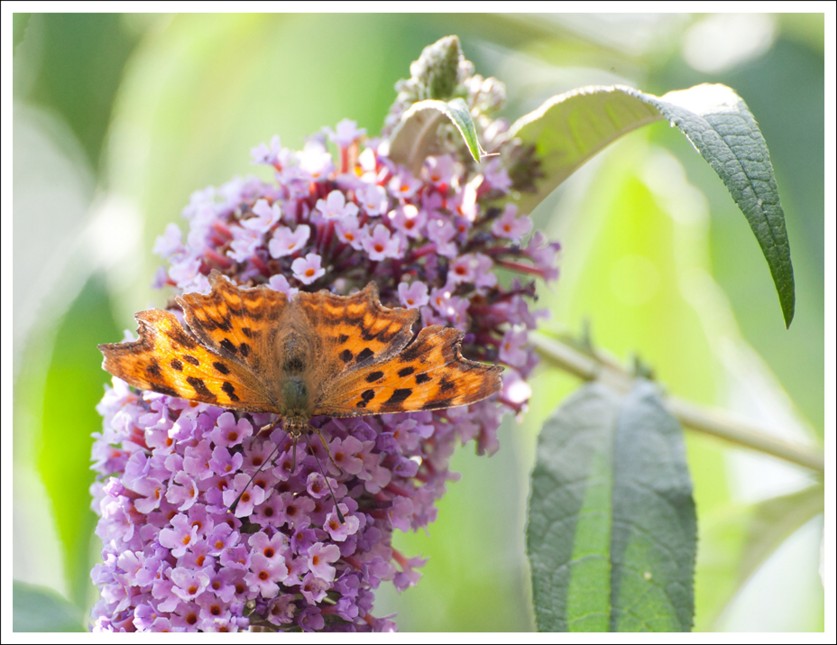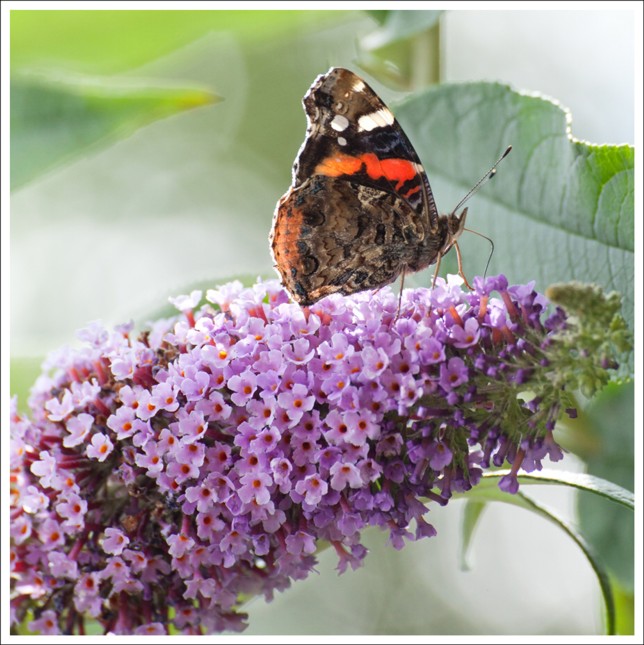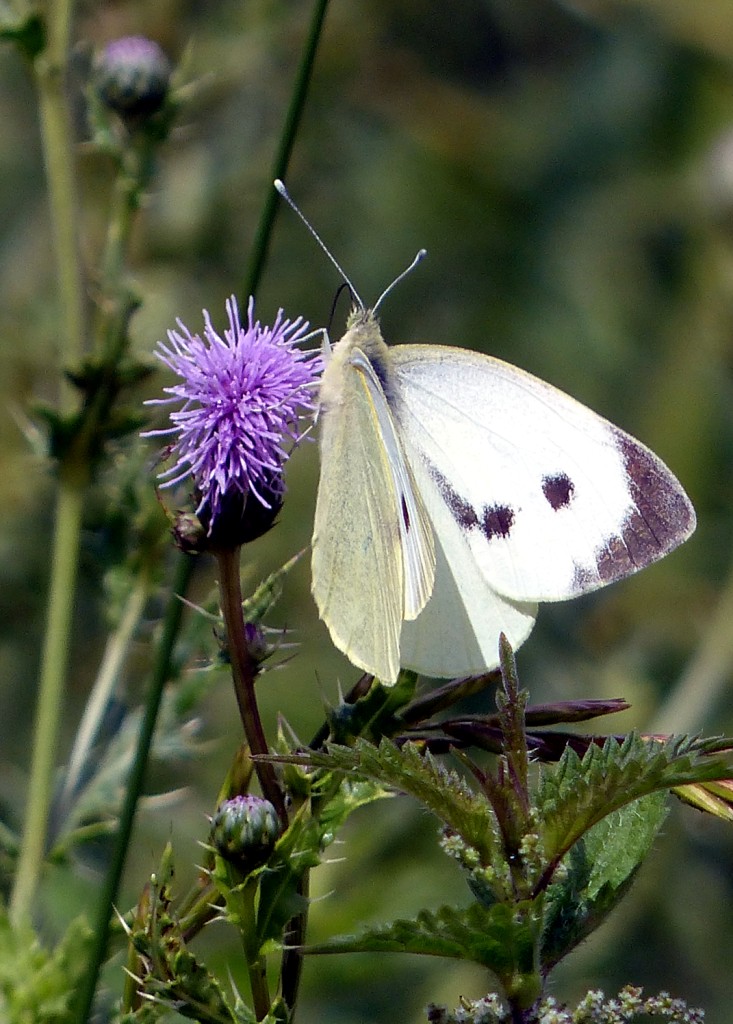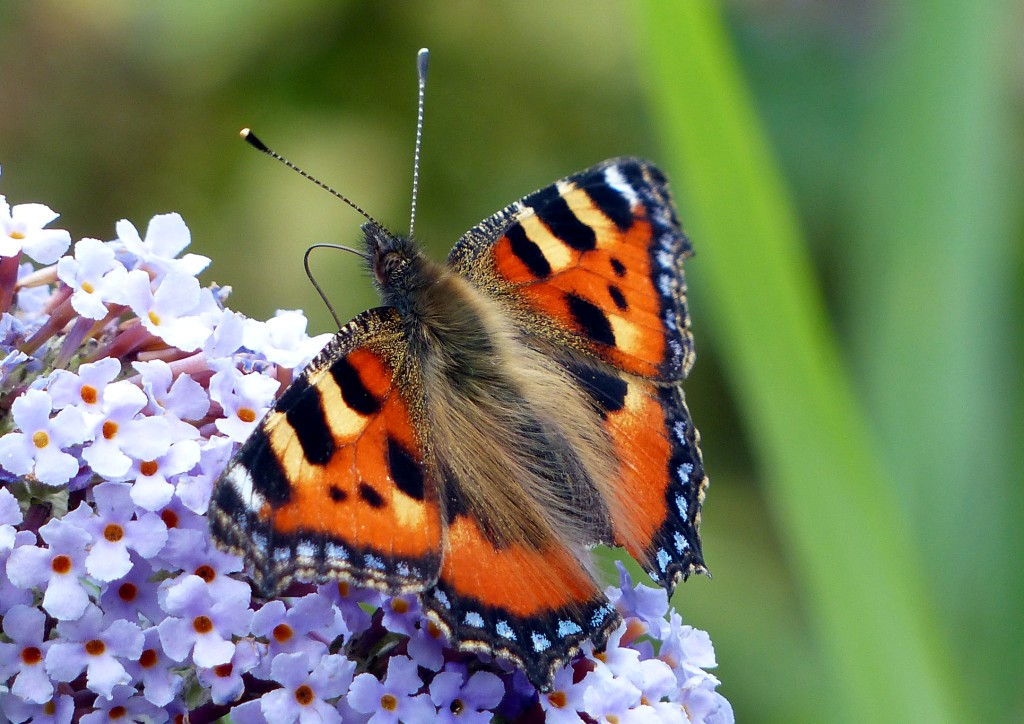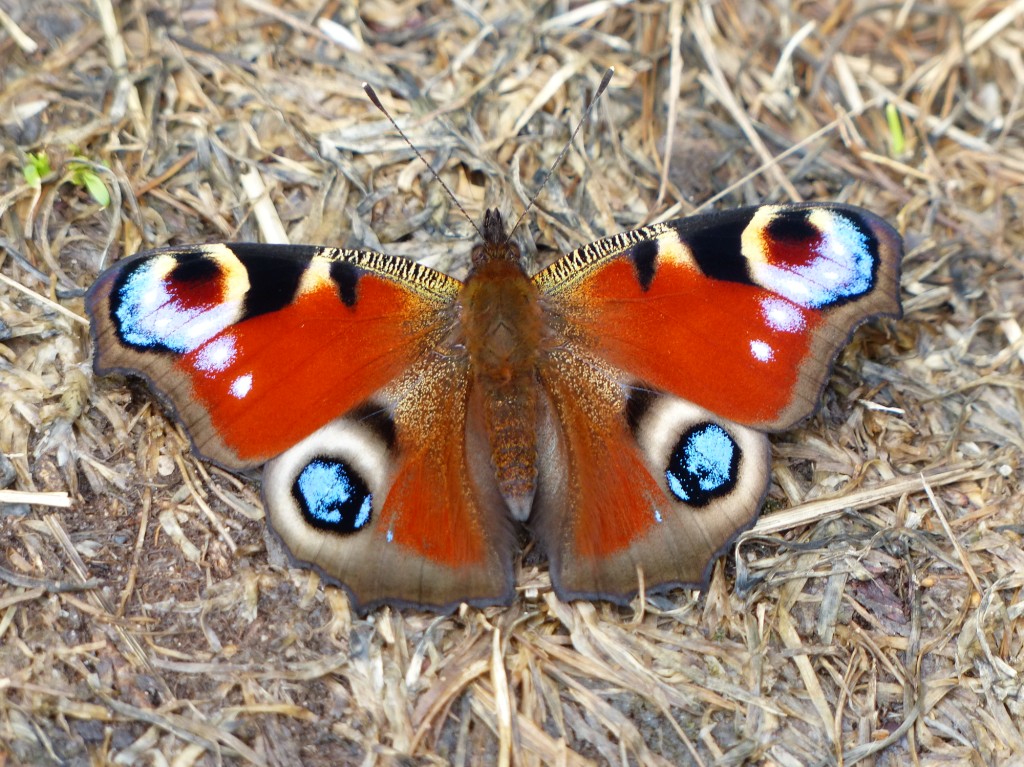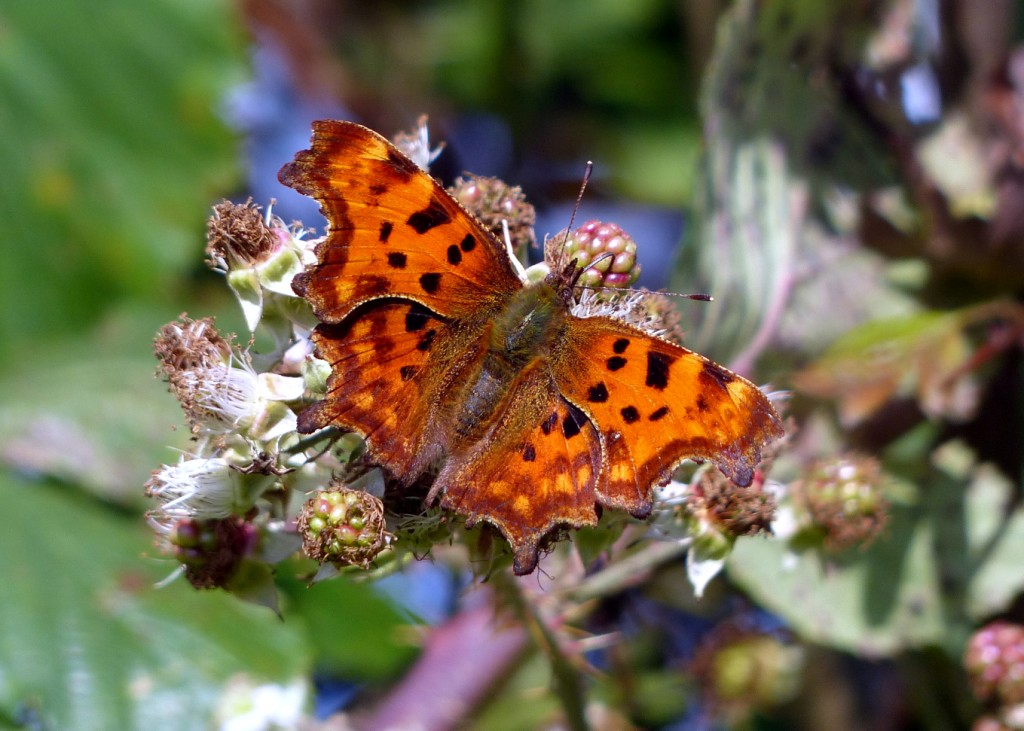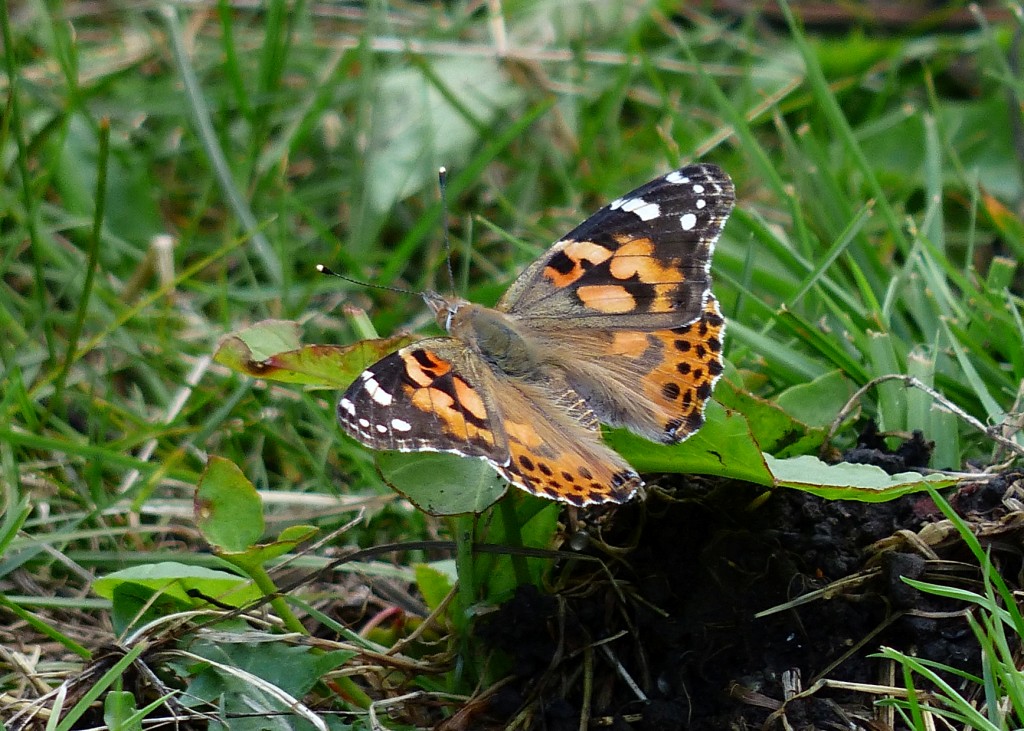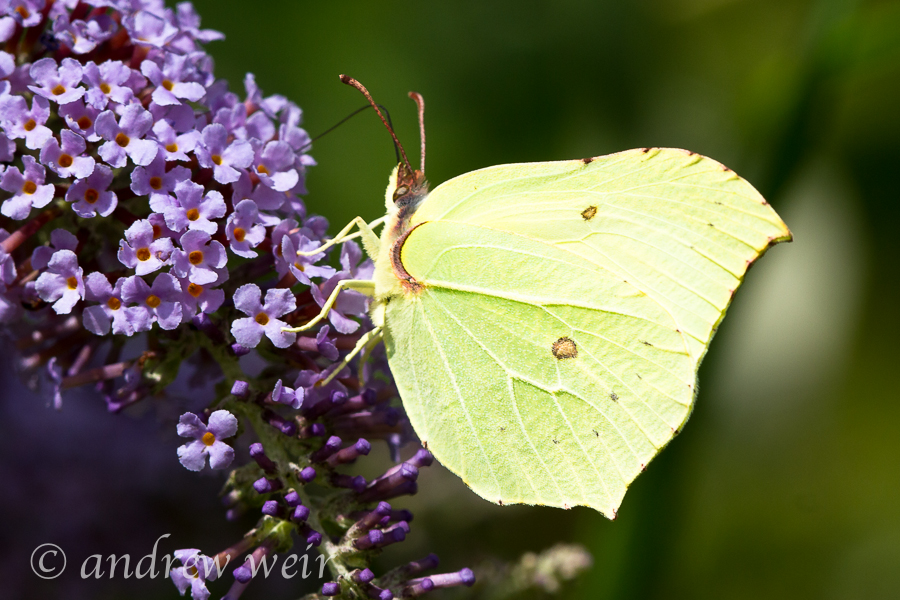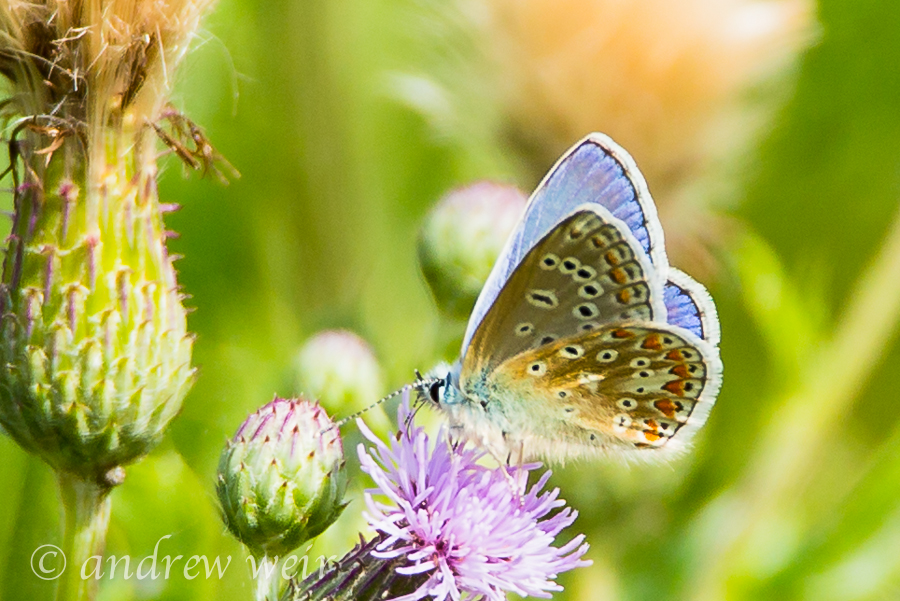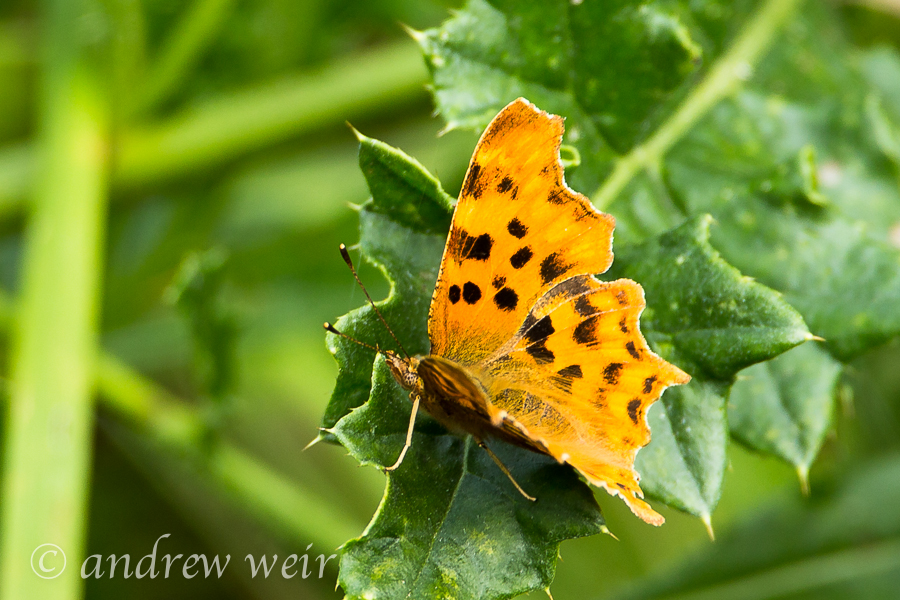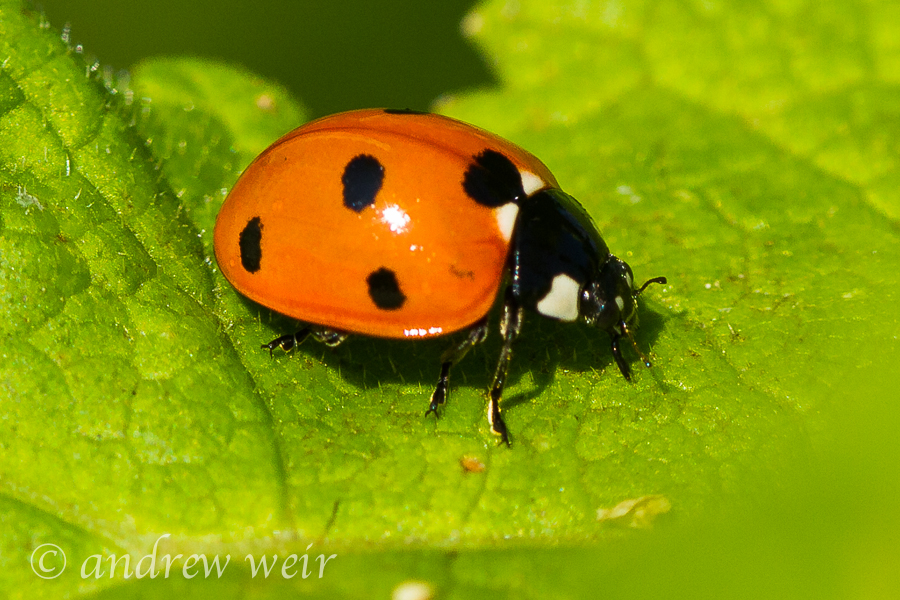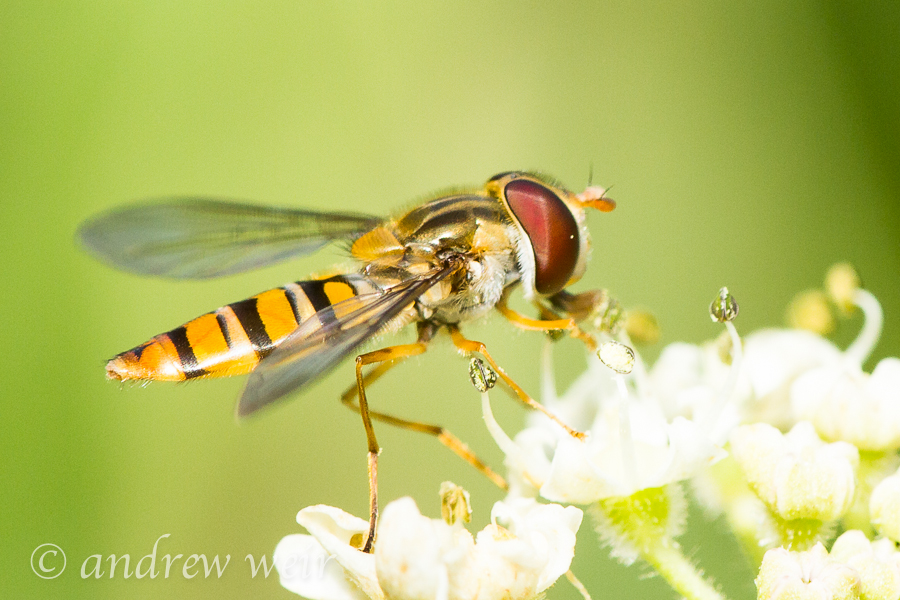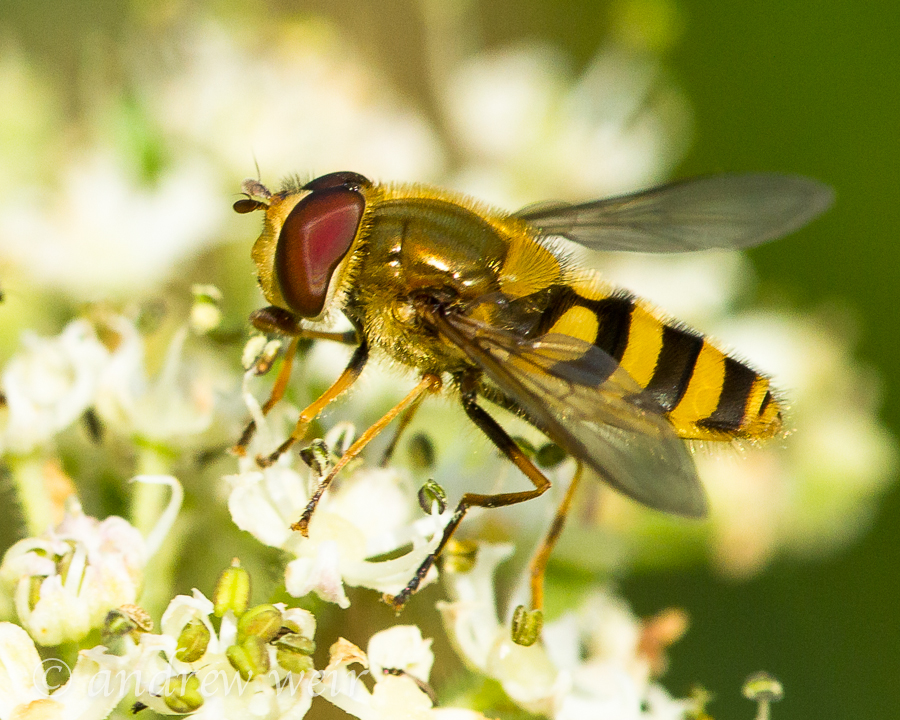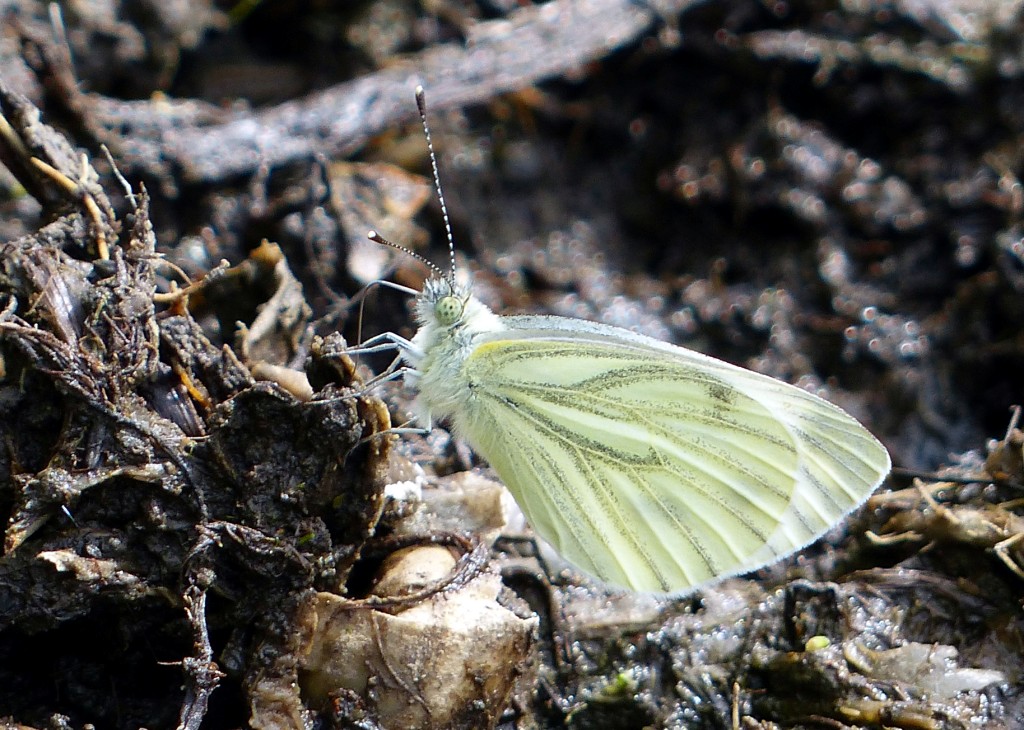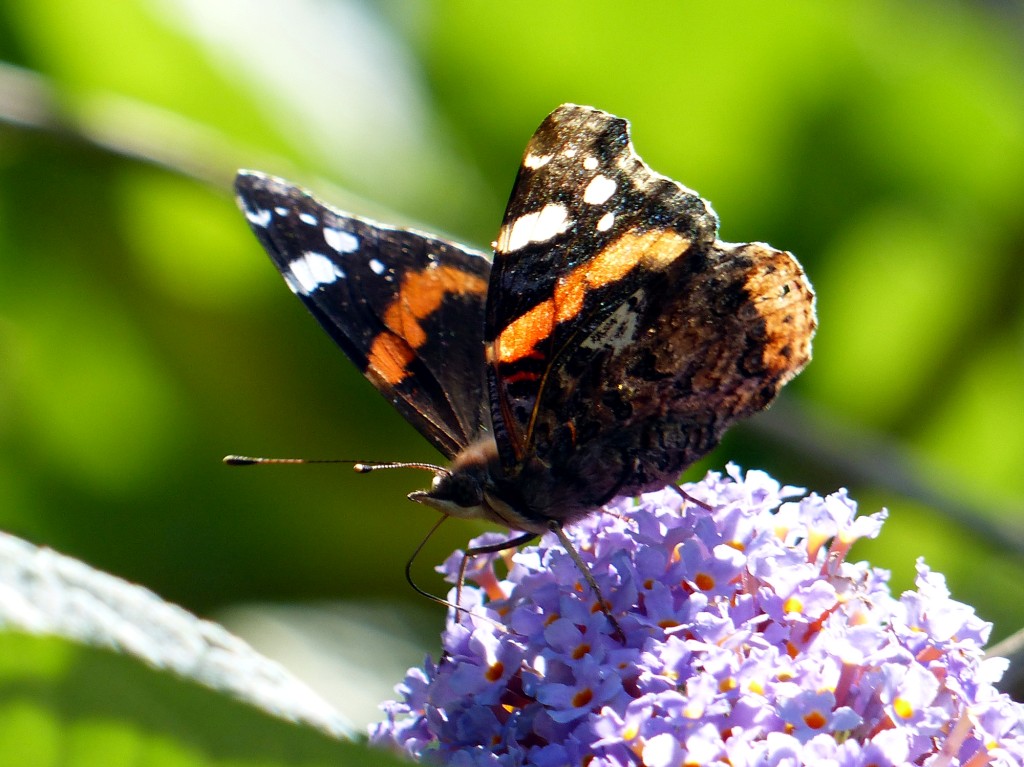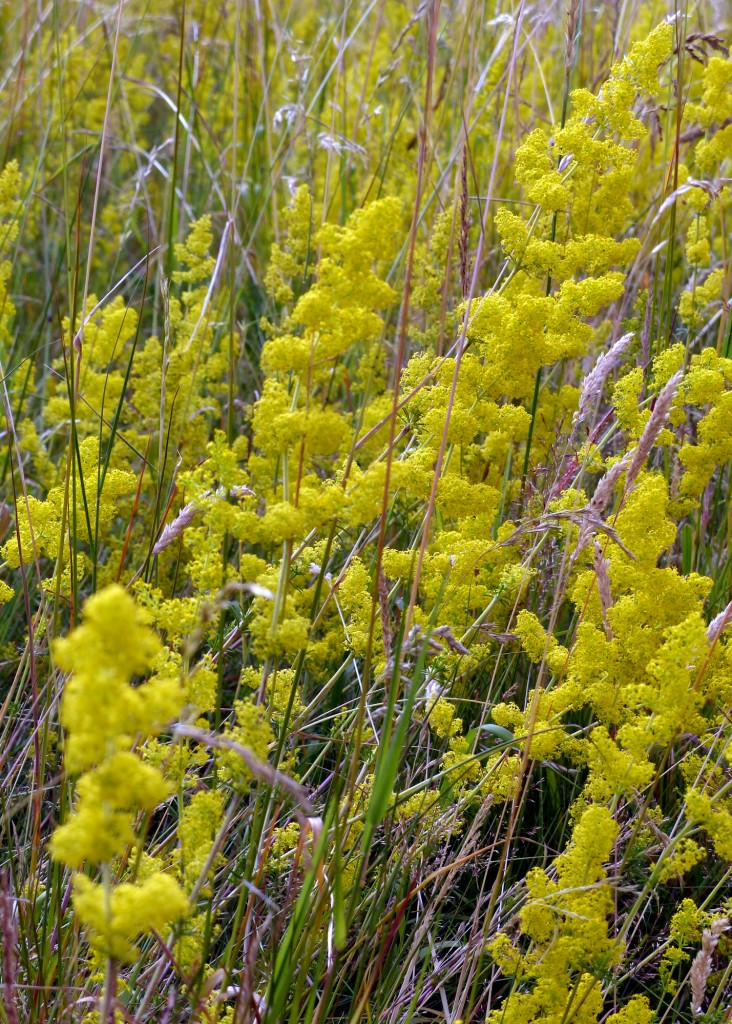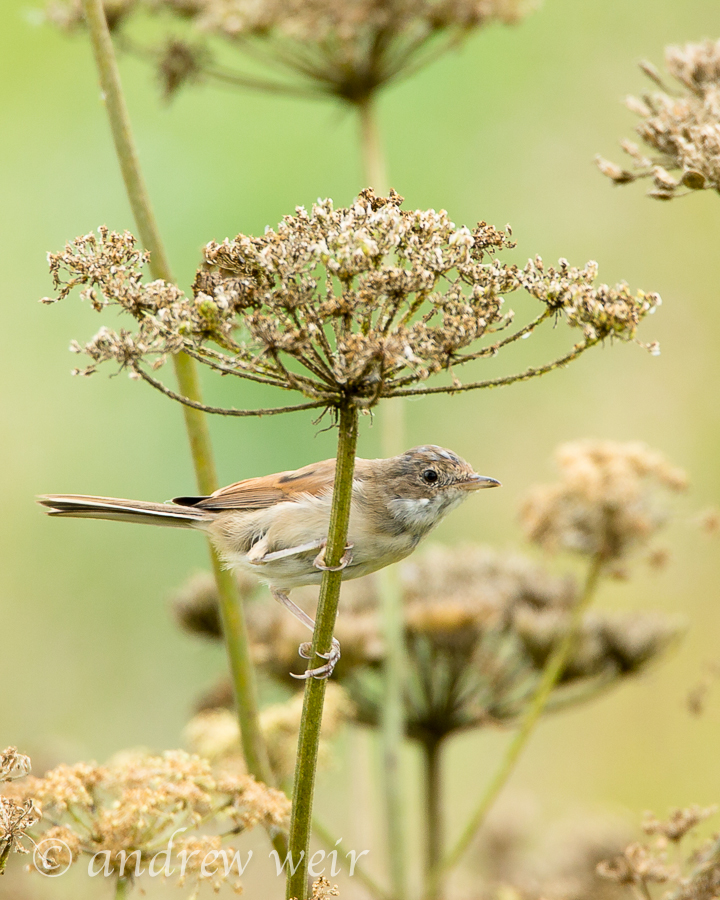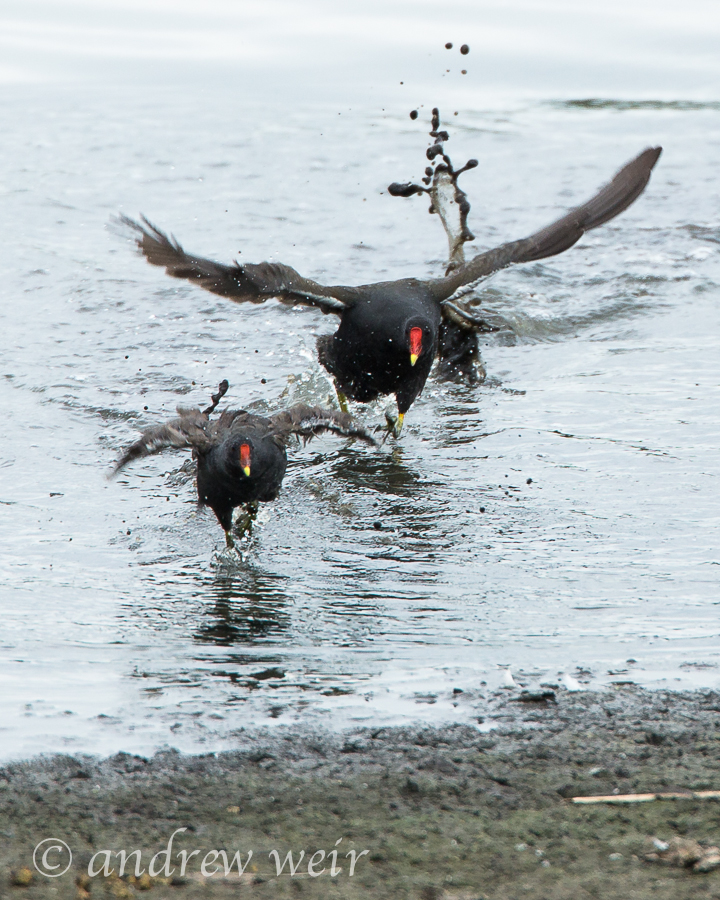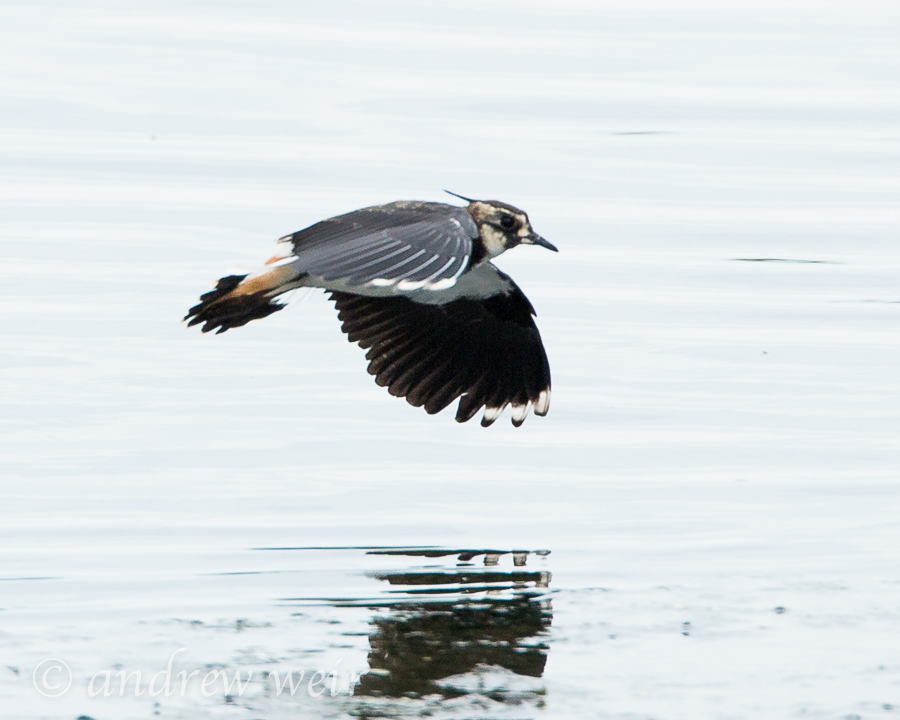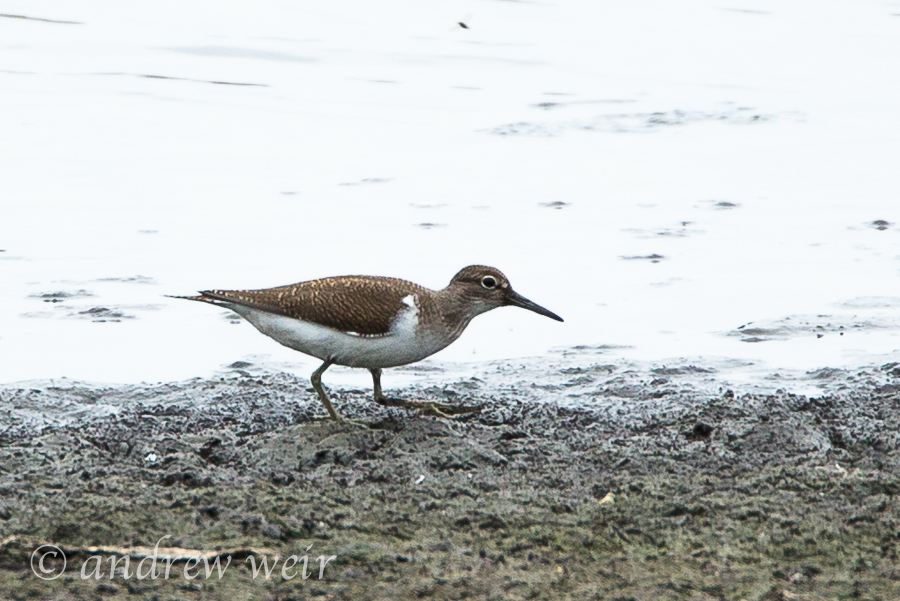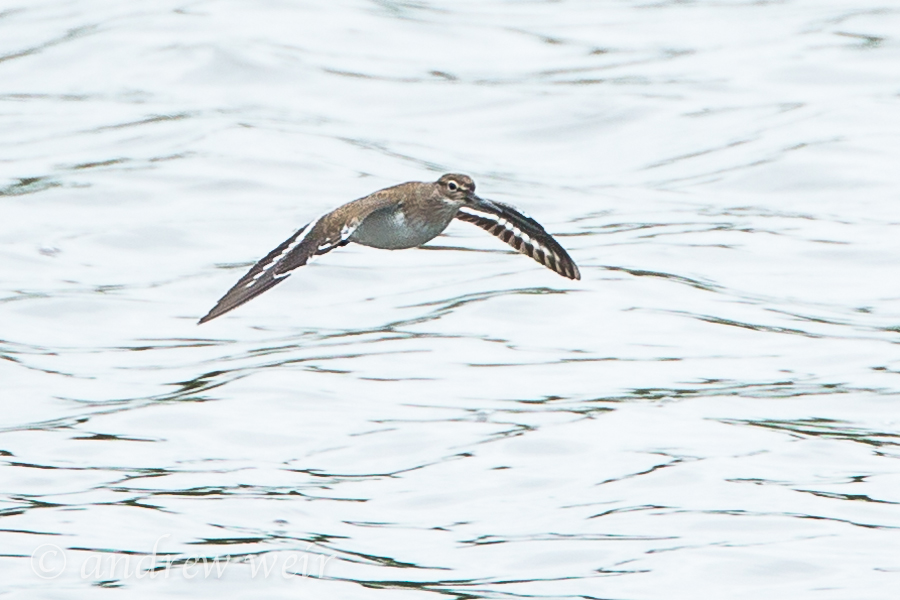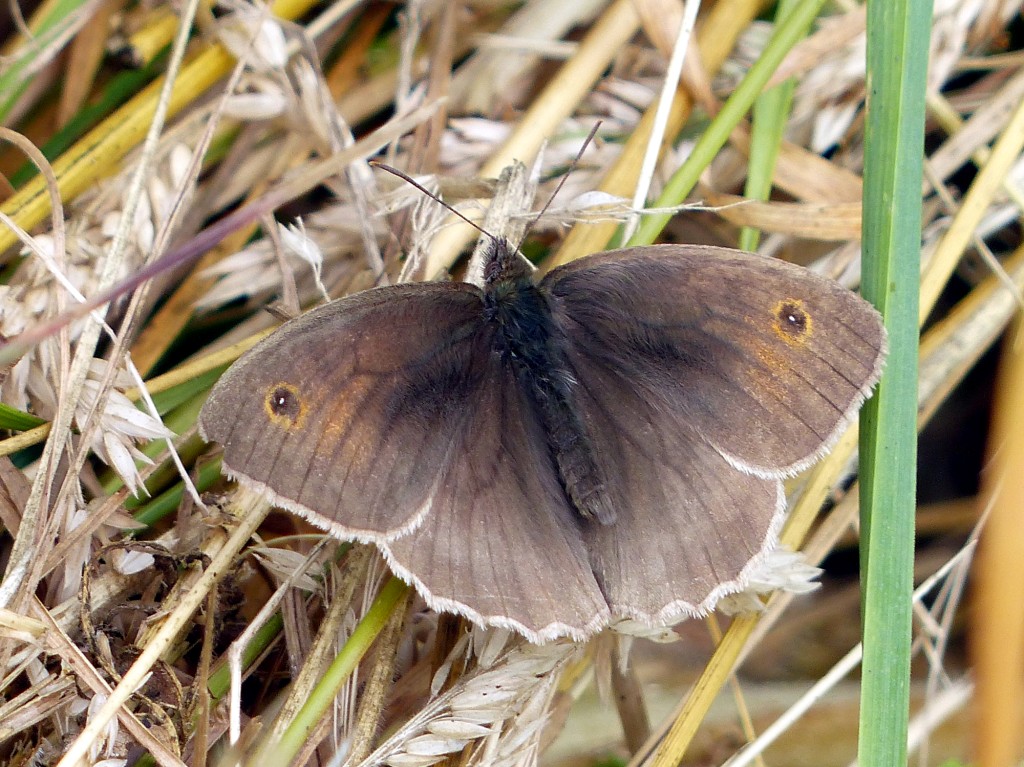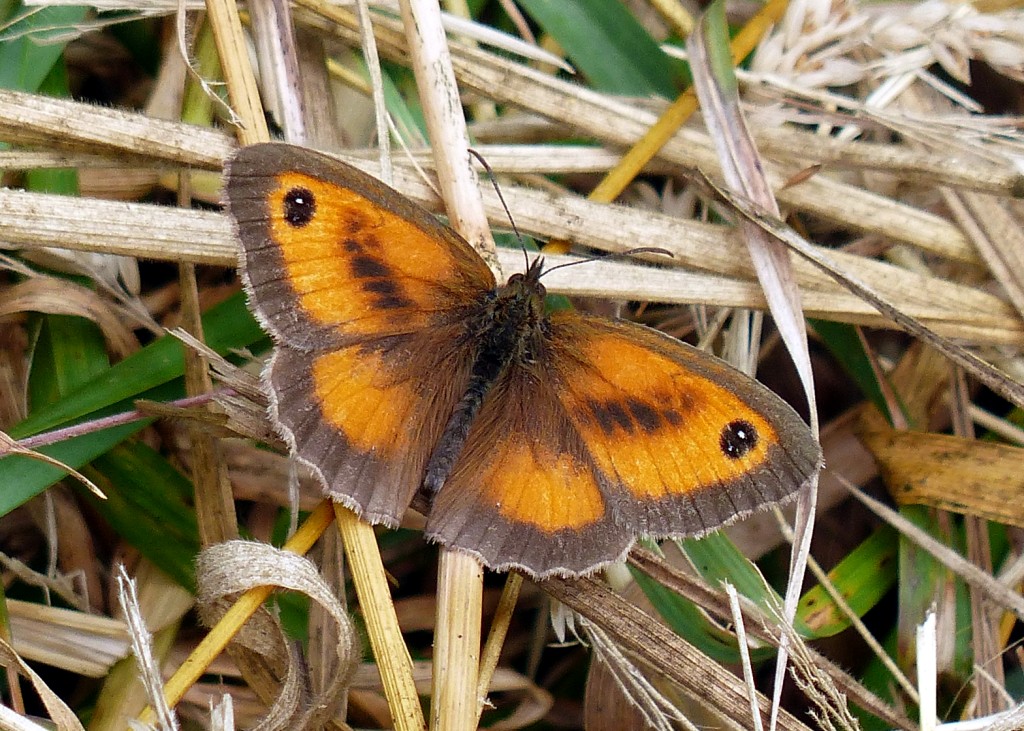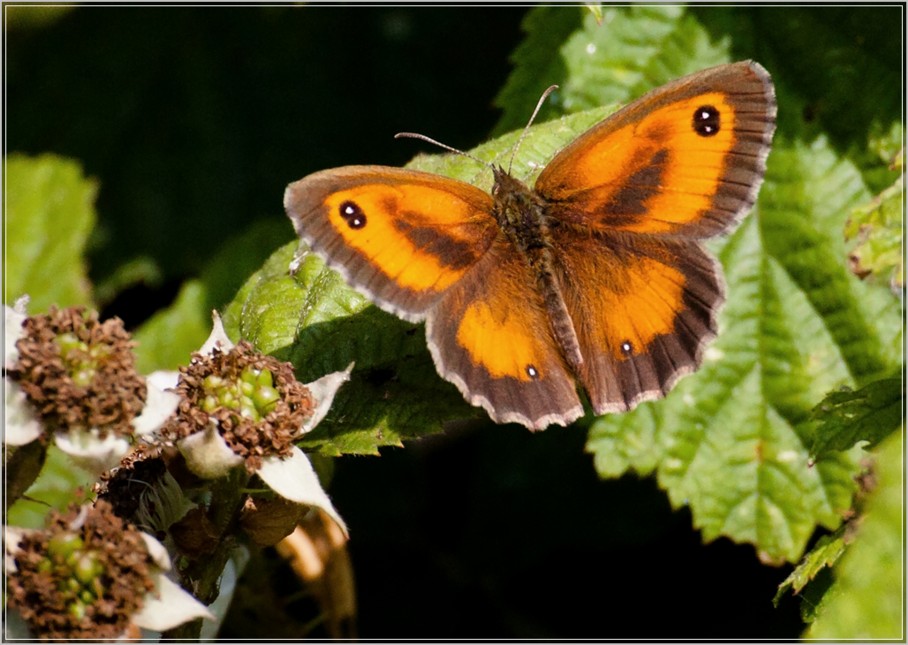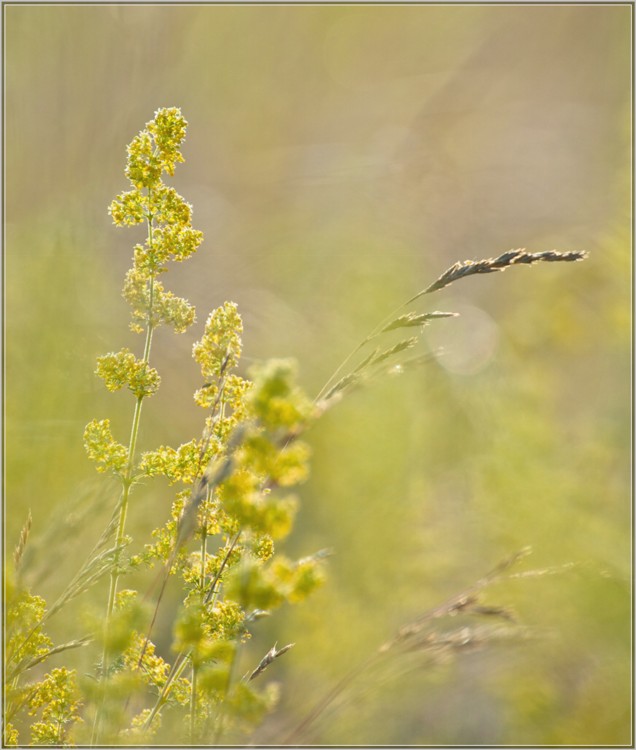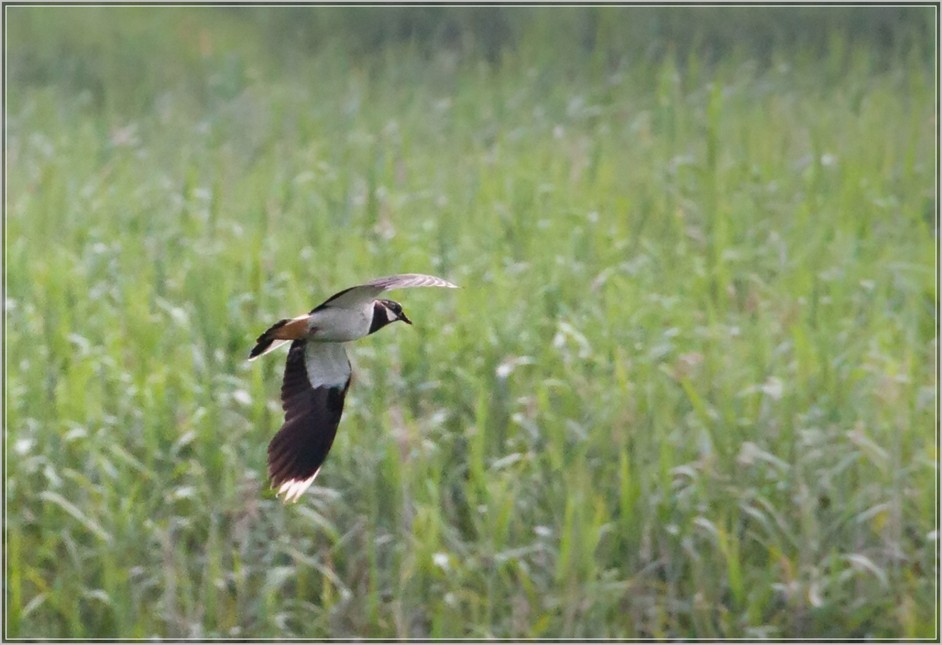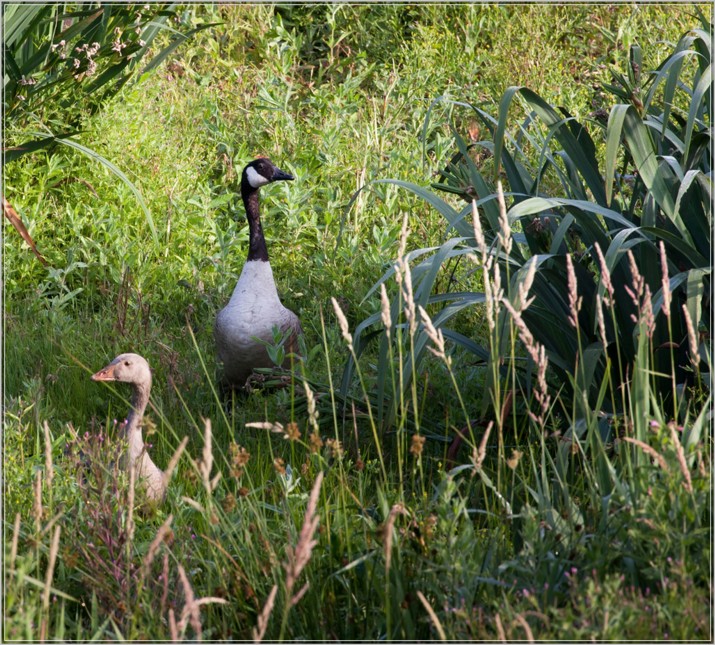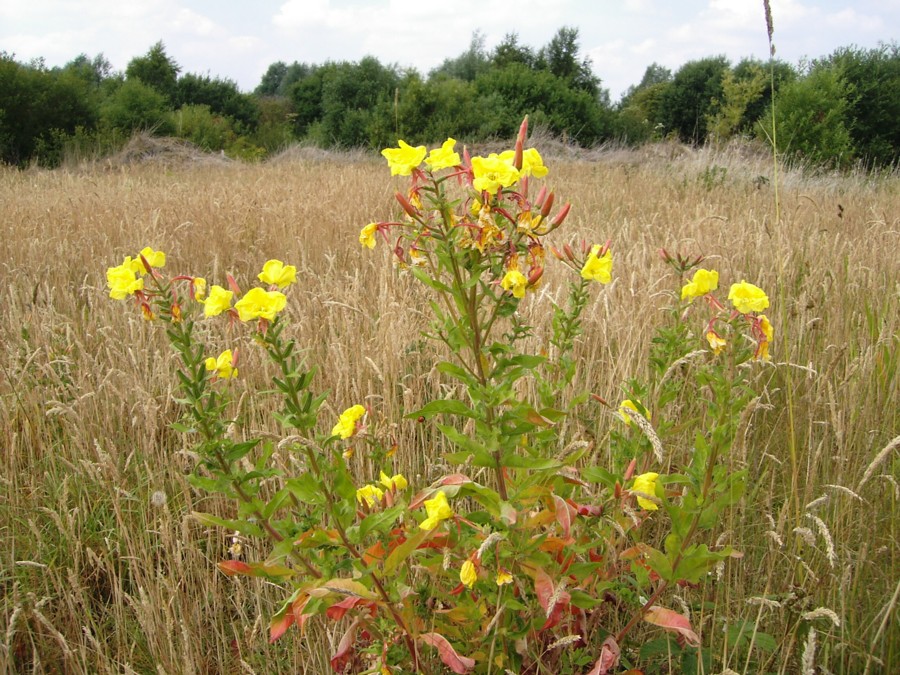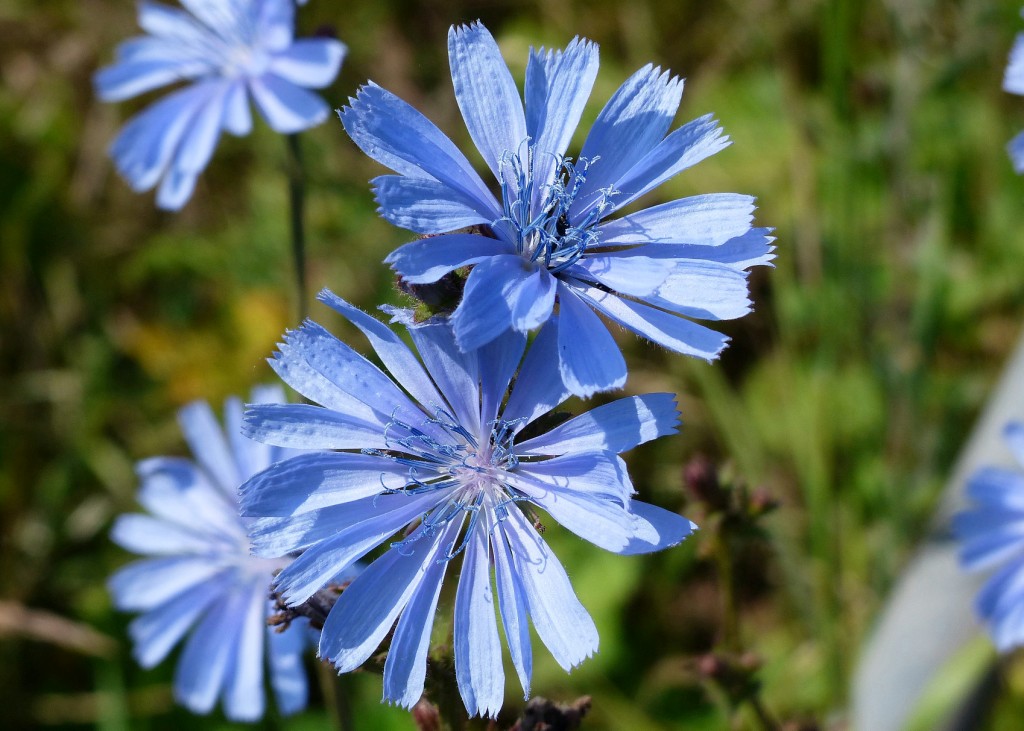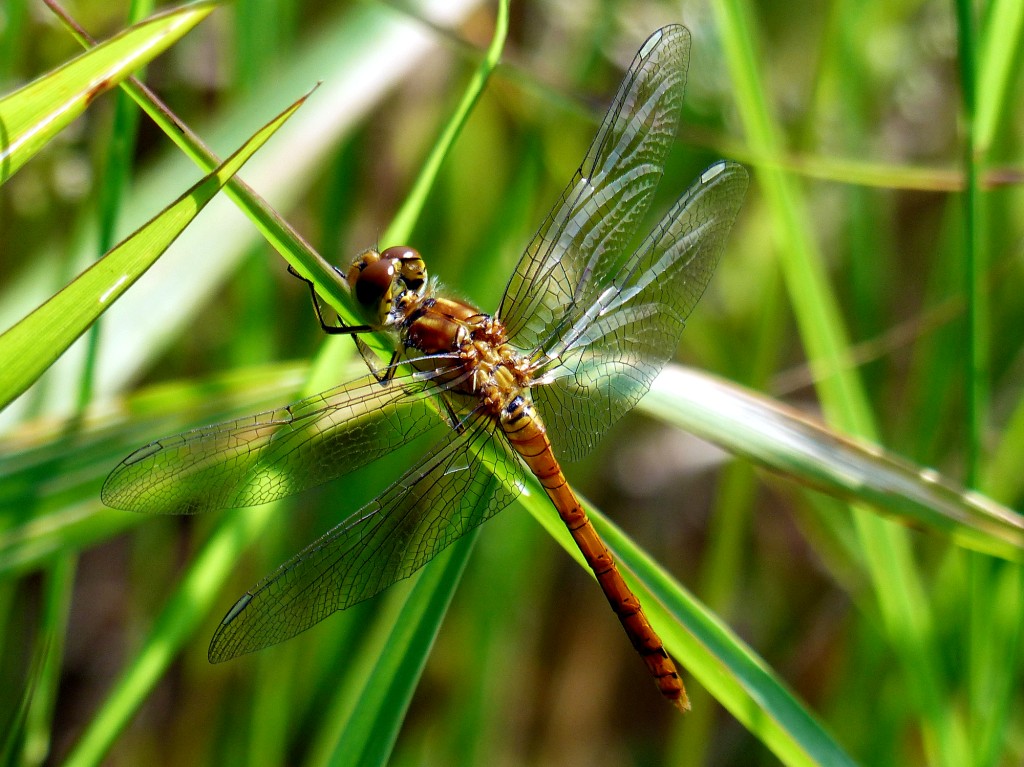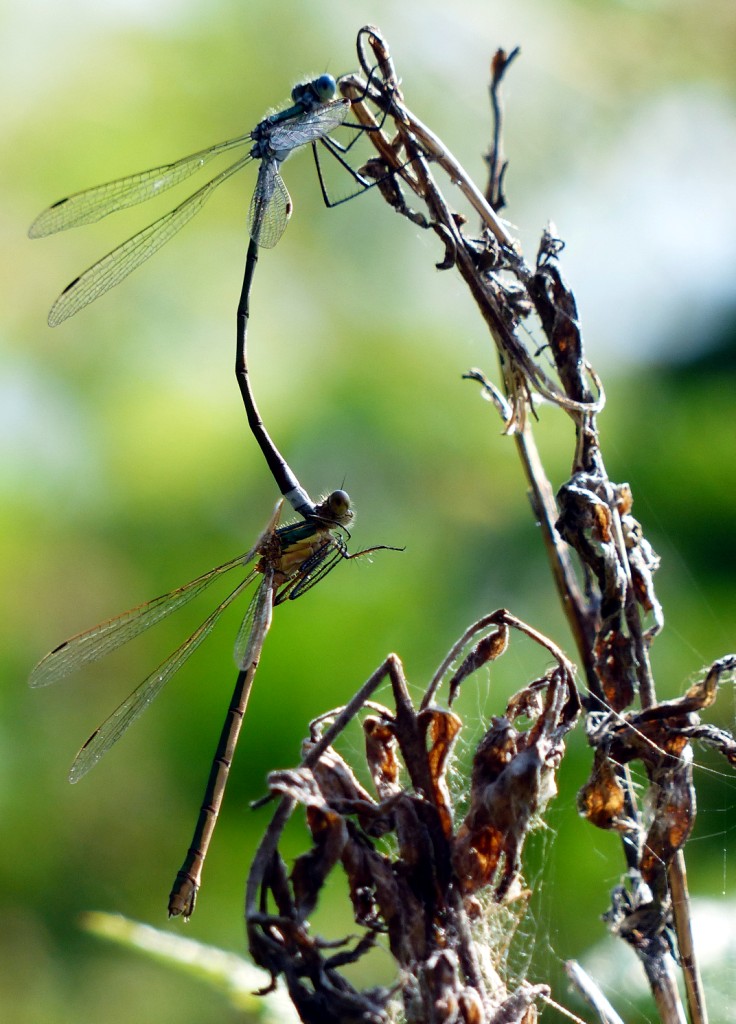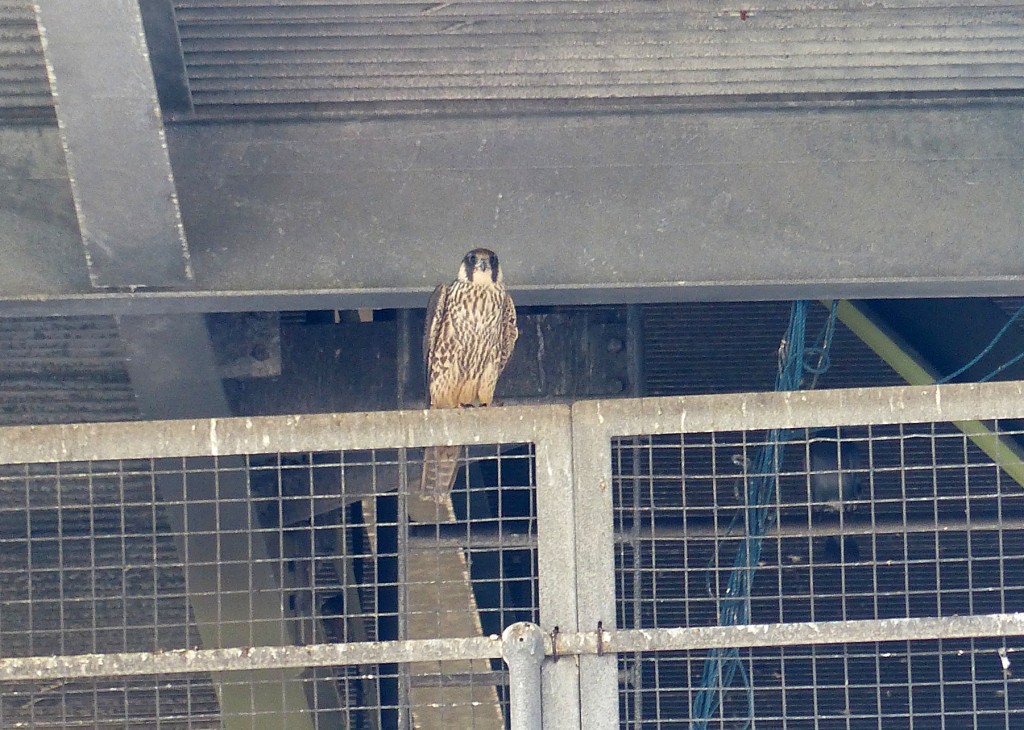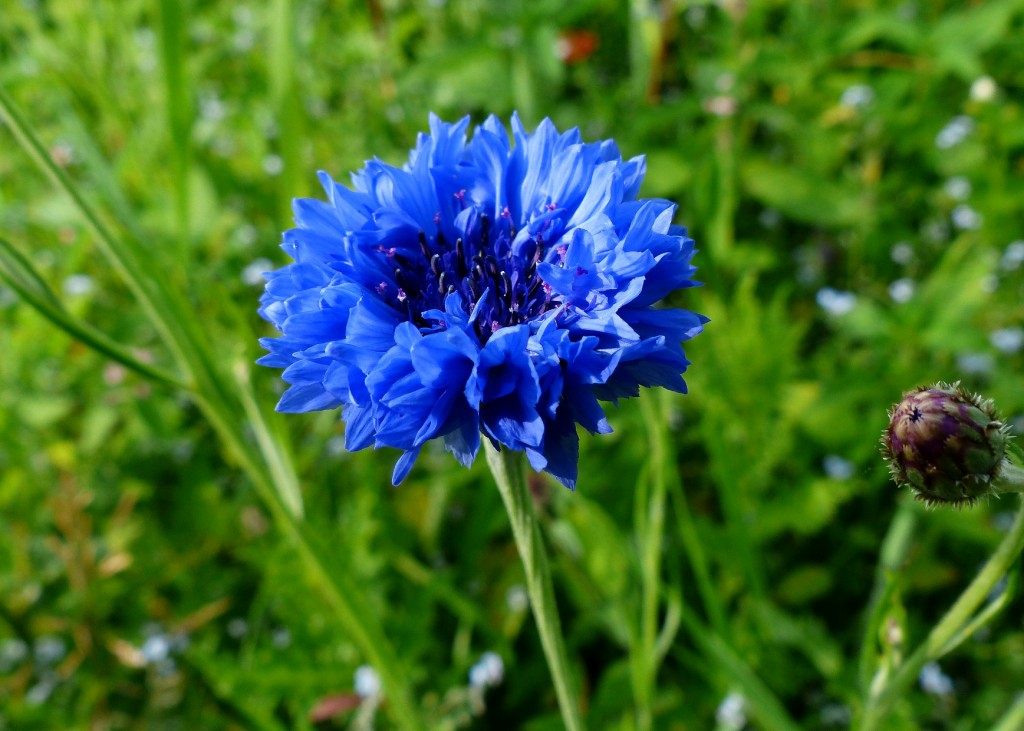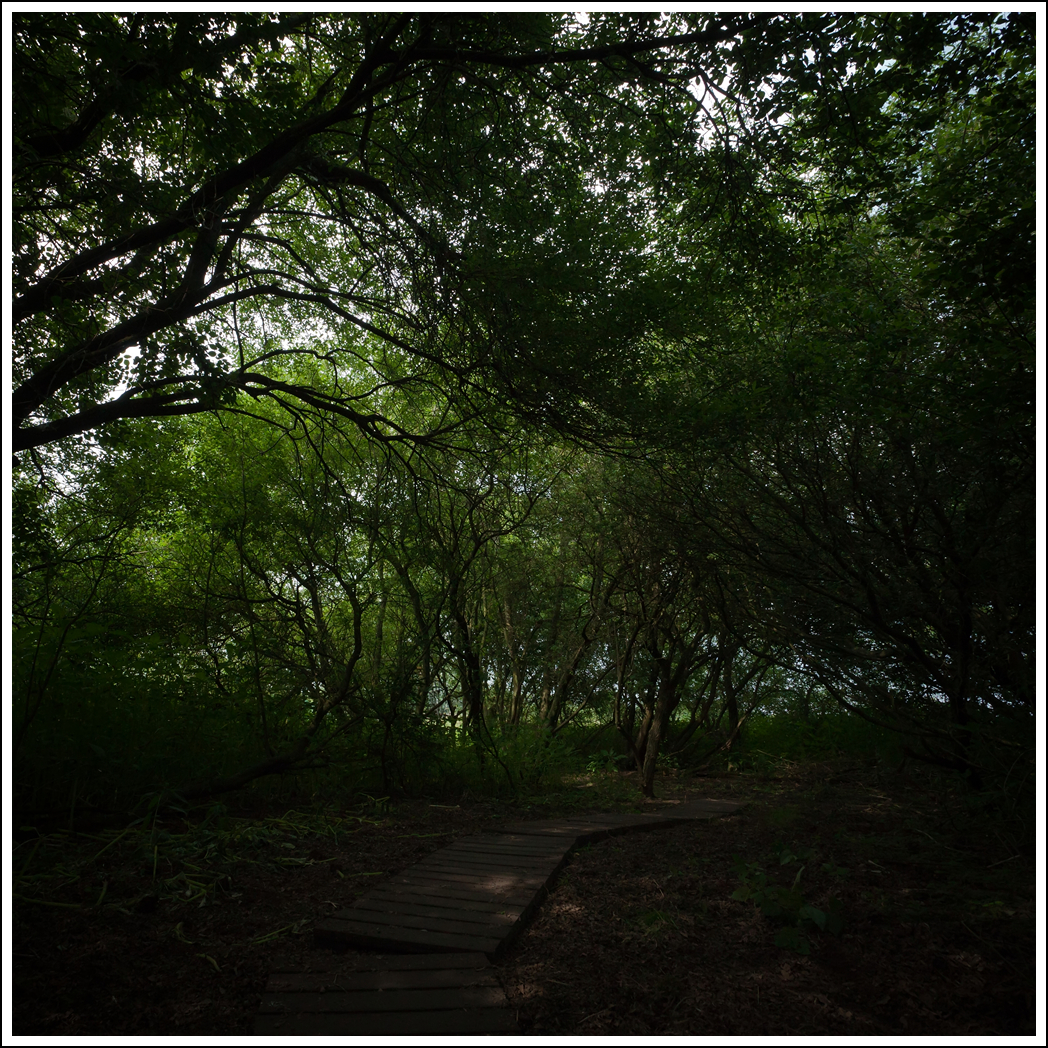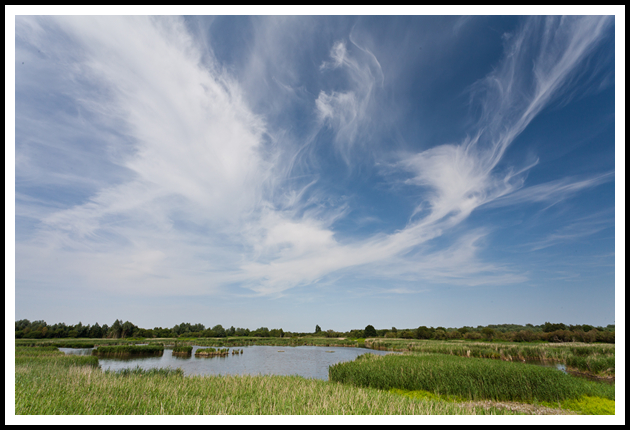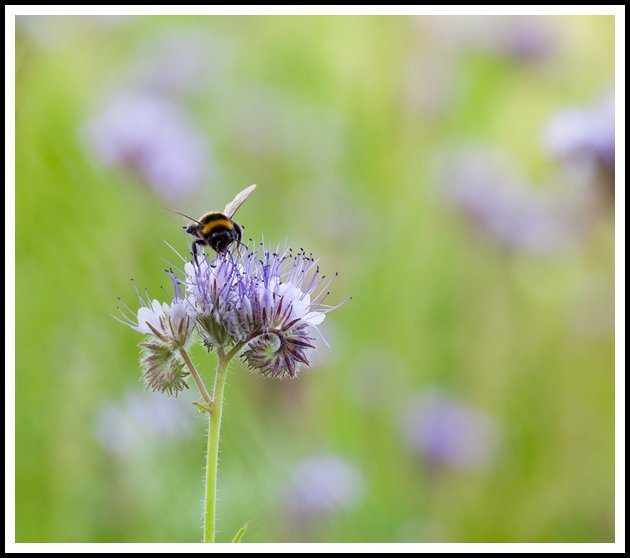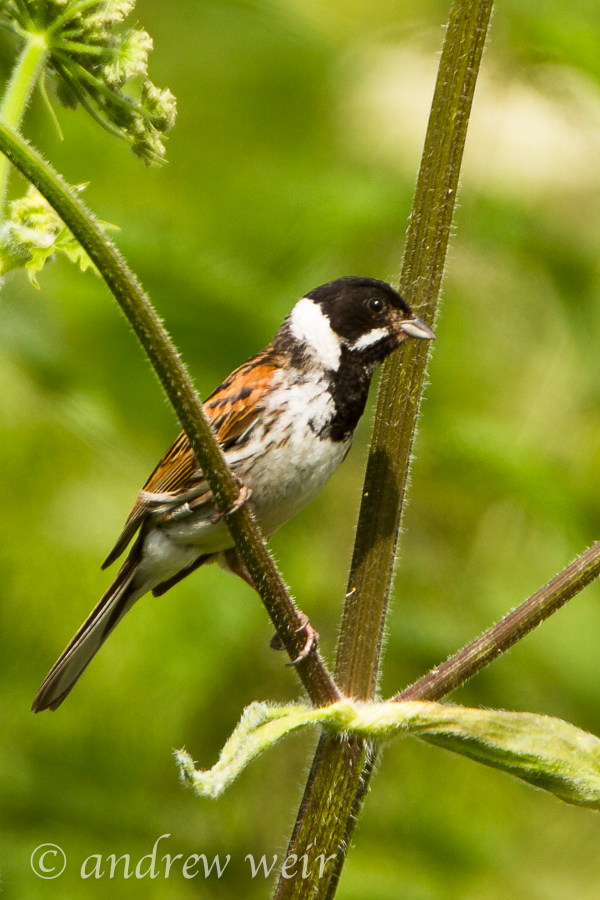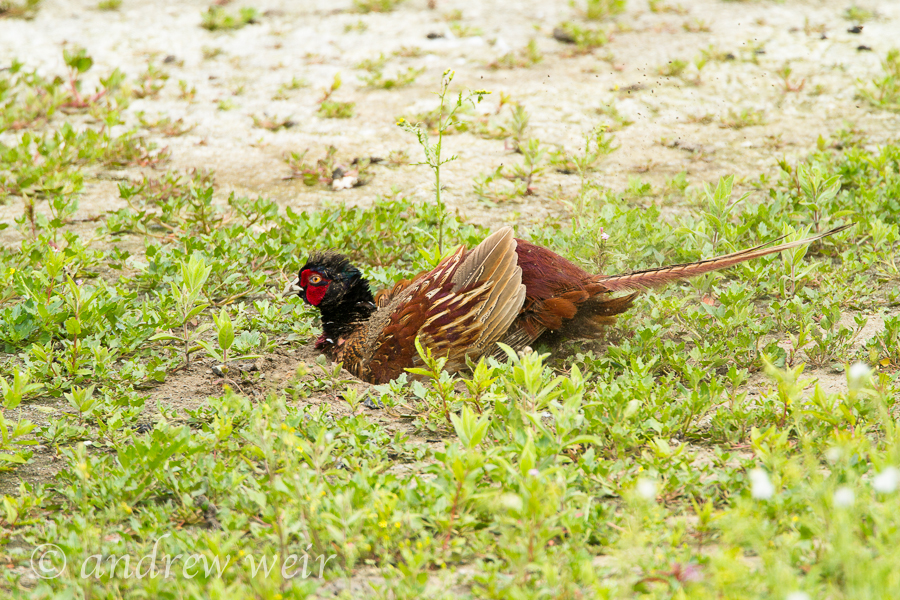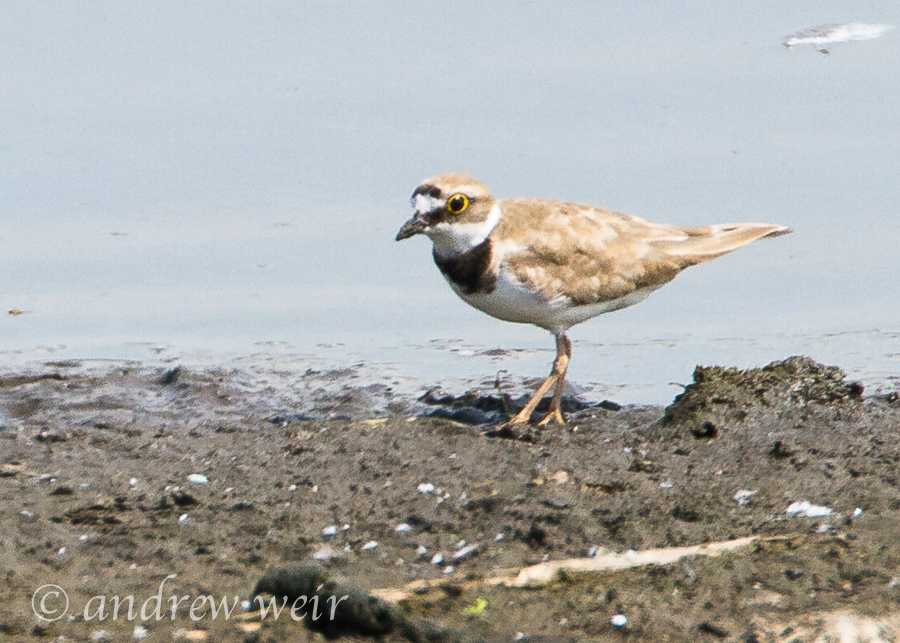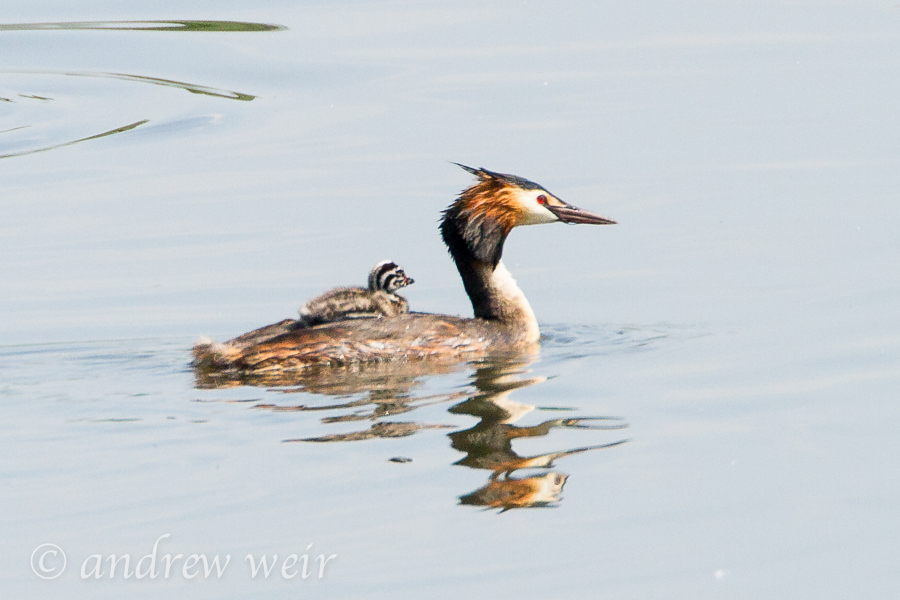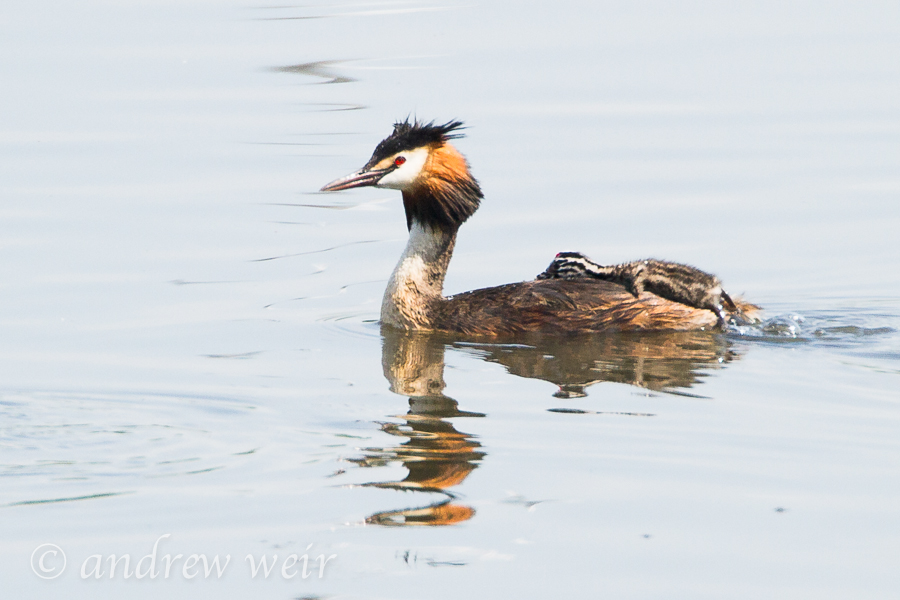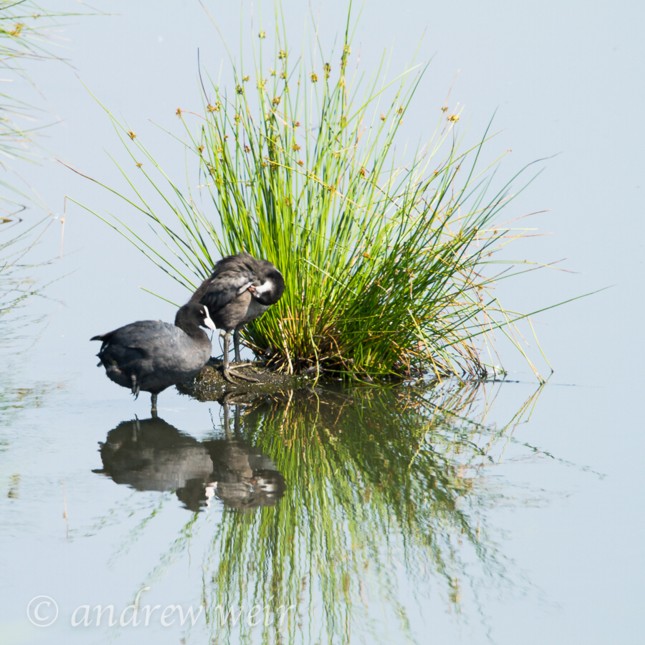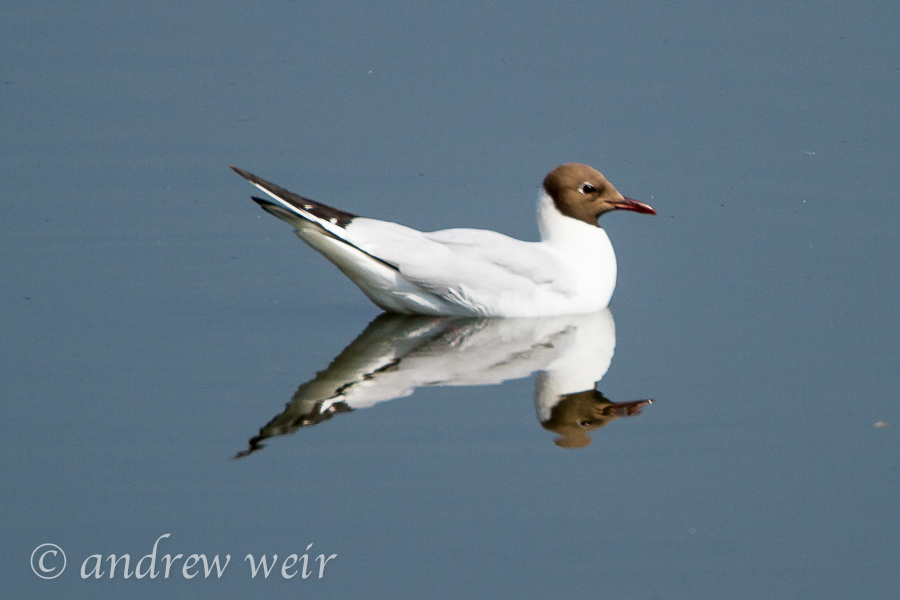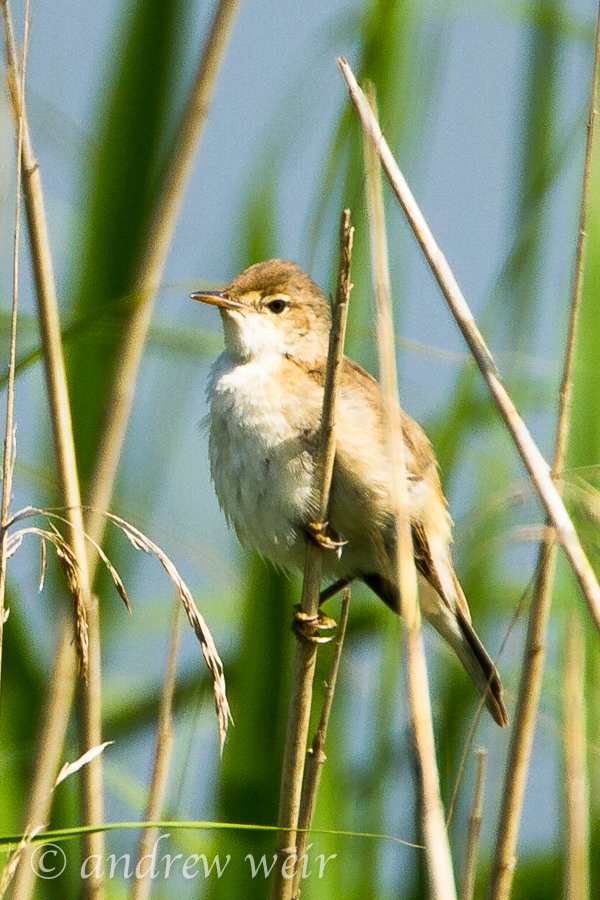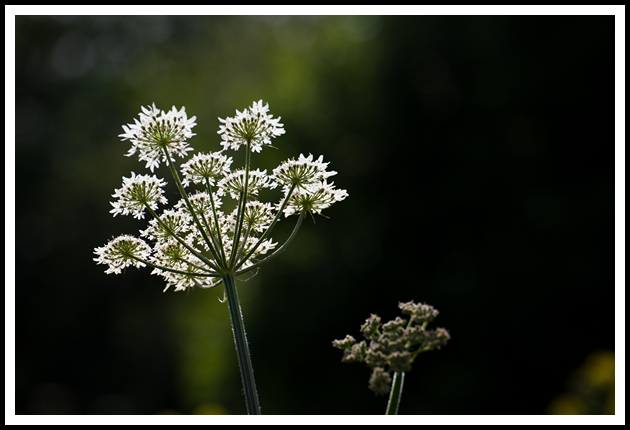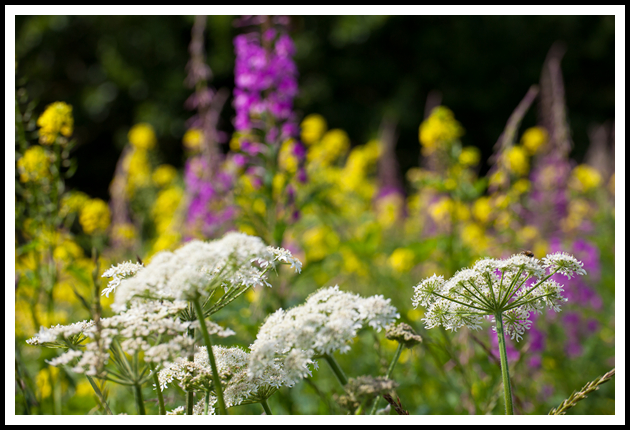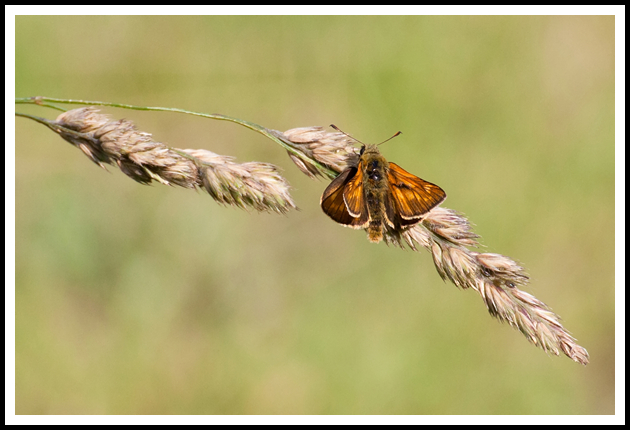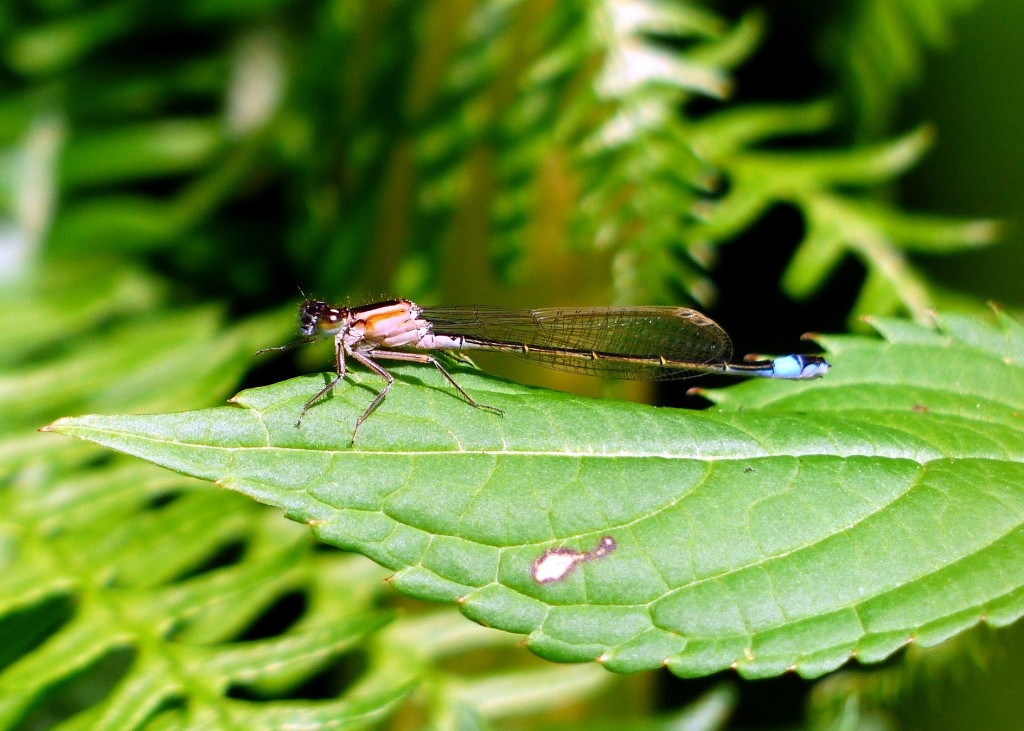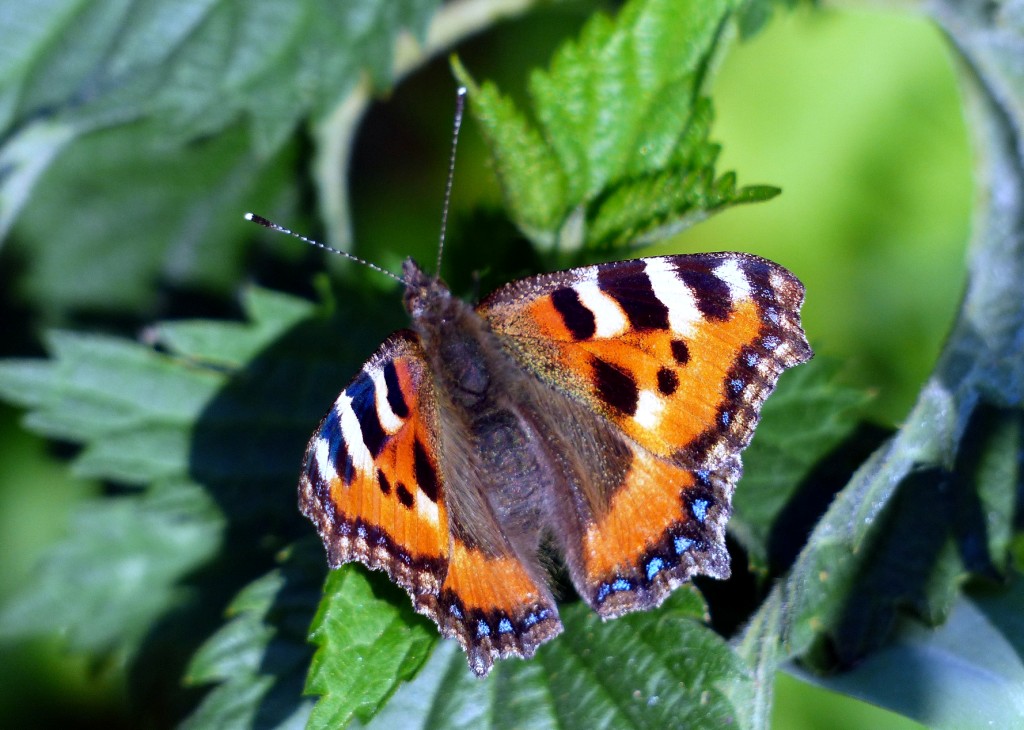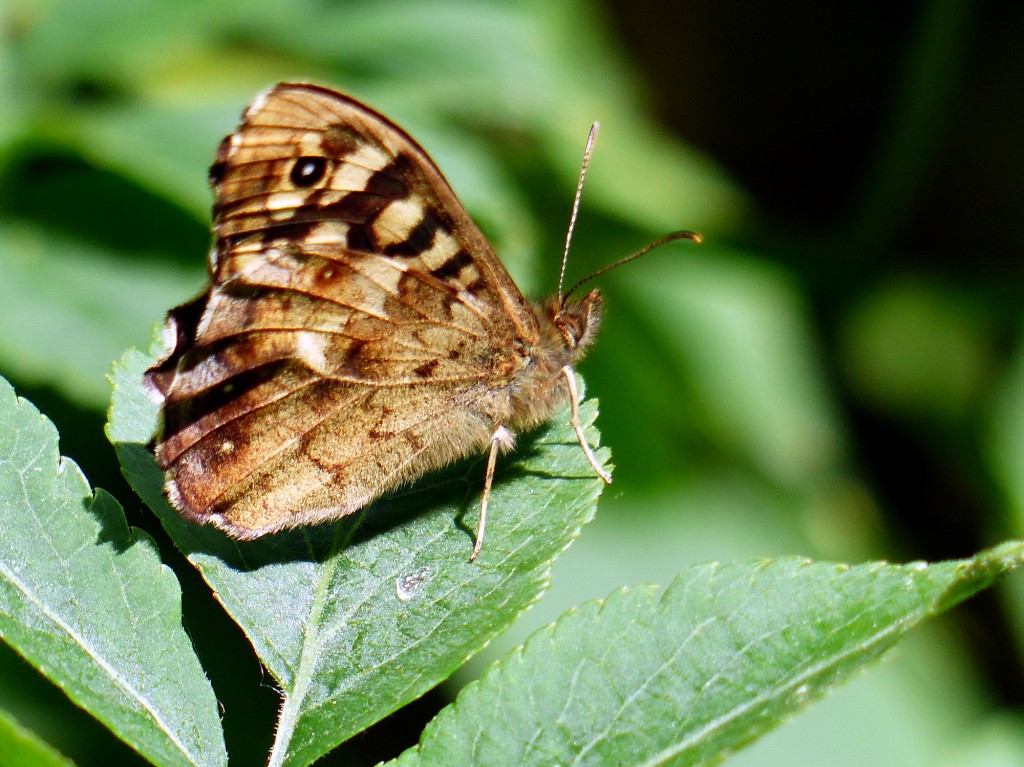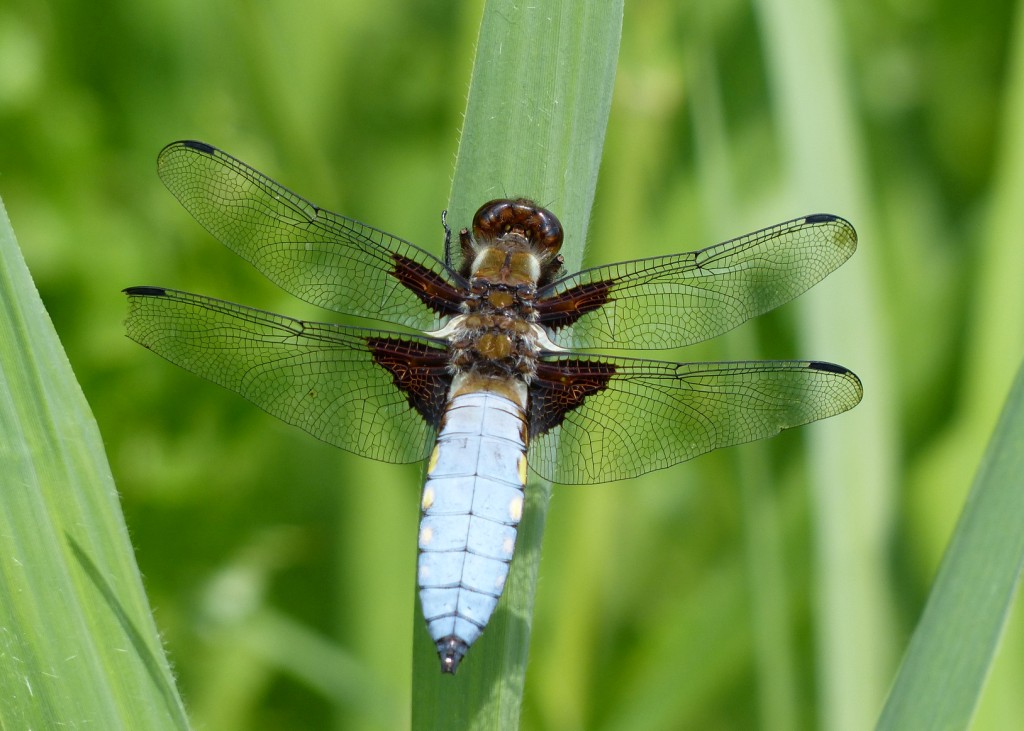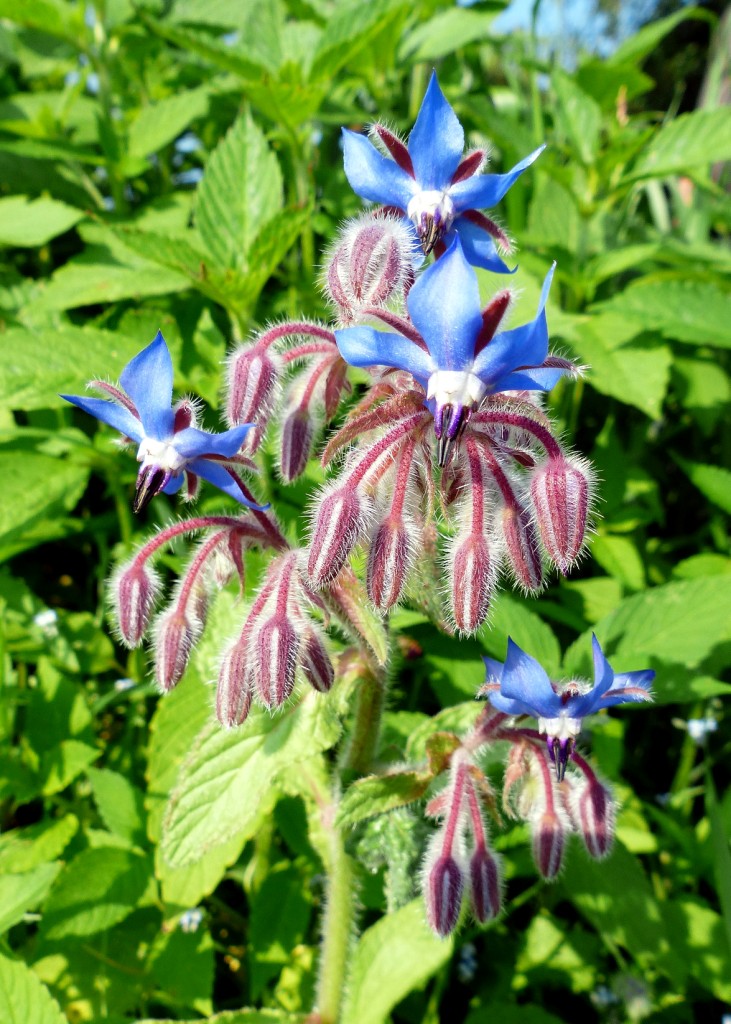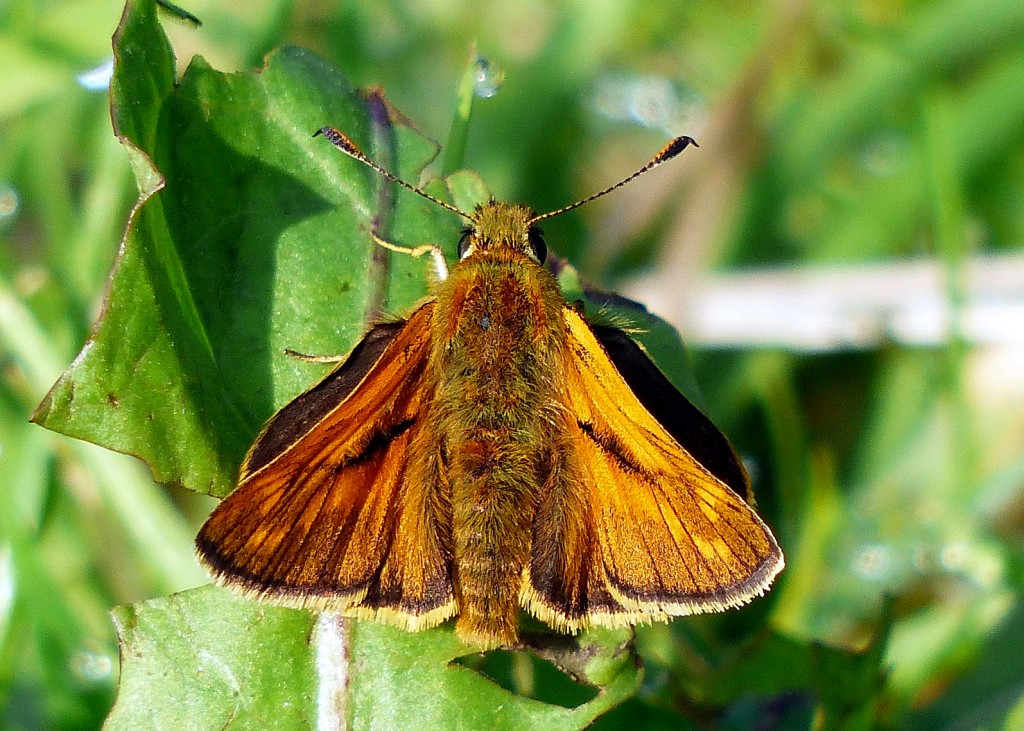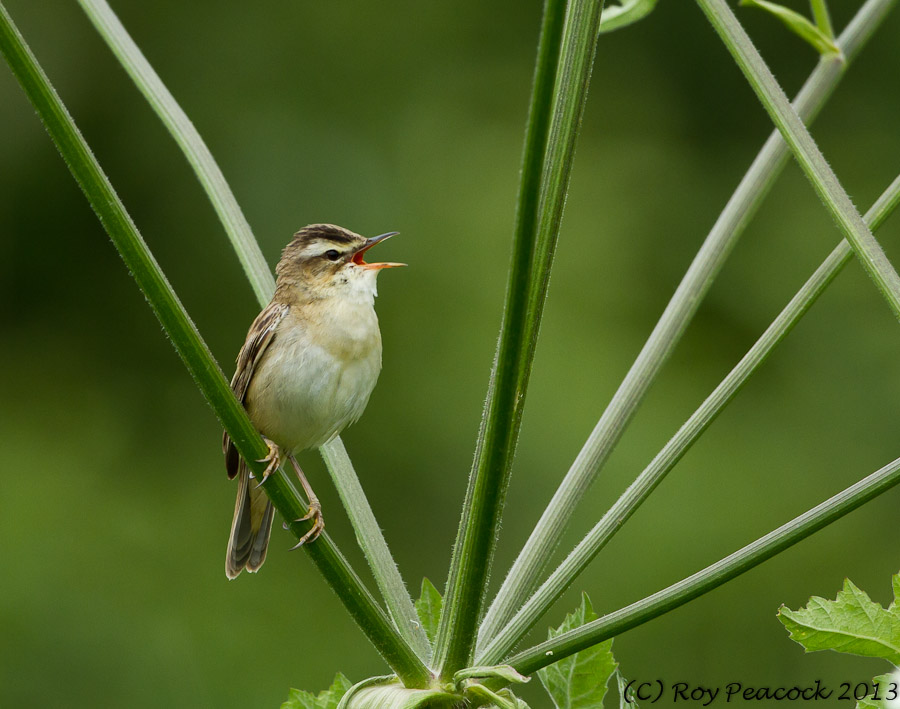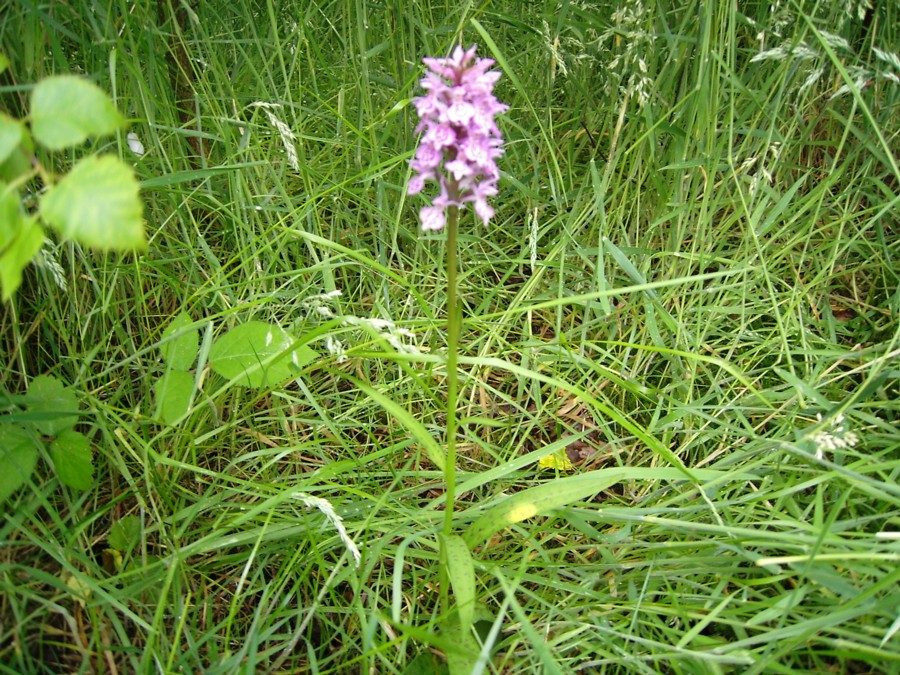Woolston Eyes Monthly Sightings
2013-07-28
Dave Riley and John Blundell were on No1 bed on the Thursday and Saturday (being joined by Tony Davis on the latter). On the first day, 73 birds were caught with the 65 new having a large proportion of warblers including 3 Sedge Warblers, 8 Reed Warblers, 3 Blackcaps, 1 Garden Warbler, 11 Chiffchaffs and 11 Willow Warblers, while 3 Willow Tits and a Goldfinch were also of note. On the Saturday, a further 76 birds were caught, and, again the 71 new contained a large number of warblers with 53 ringed, including the first Grasshopper Warbler for two years and six Sedge Warblers, Whitethroats seem to be having a poor year on the bed with the single bird ringed being the first caught on the bed for a number of weeks. The only sighting of note was of 250 swallows leaving a roost on the bed on Saturday morning.
On the Friday, Mike Miles was joined by Anna Davies on No3 bed catching 78 birds (64 new and 14 retraps) amongst the retraps was a male Blackcap first caught aged 4 on 17th April 2010 and trapped every year since.
On the Saturday morning Mike was joined by Kieran Foster, Margaret Rawlins and Mike Baron along with Jake Gregory and also Brian Hopkins, visiting from Preston with his trainee John they caught 162 birds (127 new and 35 retraps) and handled 6 different Willow Tits during the course of the morning, one adult retrap and 5 juveniles (2 new and 3 retraps) the adult was ringed, aged 3, on 24th August 2007. Other notable retraps included a 4 male Reed Warbler ringed as an adult on 5th June 2010 and trapped every year since, and a Whitethroat ringed as a 4M on 12th June 2010 and not encountered since. Strangest retrap was a 6F bullfinch ringed on 15th August 2010 aged 3 and not encountered since. Given the number of Bullfinch captures we make at our feeders one can only wonder how this bird has managed 3 years on the run.
Meanwhile, the moult season moves on. This weekend they caught their first Great Tits that had dropped greater coverts, several more adult Reed Warblers entering there partial post breeding moult and our first sexable juvenile Chaffinch.
Sightings around the bed included two Greenshanks, three Black-necked Grebes, two Dunlins, a Nuthatch calling on the south bank and a Poplar Hawk Moth.
David Bowman was also on No3 bed on the Saturday morning, amongst the highlight a White-letter Hairstreak, seen briefly feeding on Thistles in front of the Morgan Hide. Andy Weir managed to get a photo, confirming the ID. Otherwise waders were again good, with: 1 Green Sandpiper, 2 Greenshanks, 1 Curlew, 1 Common Sandpiper, 1 Little Ringed Plover, 7 Common Snipe and 72 Lapwings. One adult and 3 juvenile Black-necked Grebes were still present, along with 1 Kingfisher, 41 Teal, 18 Shoveler, 6 Little Grebes, 90 Gadwall, 5 Great Crested Grebes, 2 Willow Tits, 5 Bullfinches, singles of Treecreeper and Stock Dove (ringed by K. Foster et al). Butterflies, apart from the Hairstreak, included 3 Commas and 4 Red Admirals.
Other sightings from the past couple of days included: 1 Hobby and 1 Marsh Harrier.
Dave Hackett’s visited on 25th and comments as follows “With continued warm weather butterfly numbers are increasing dramatically. Reserve-wide totals for this week were 1457 Gatekeeper, 325 Small White, 664 Meadow Brown (a record total for Woolston), 104 Small Tortoiseshell, 44 Small Skipper, 6 Common Blue, 8 Comma, 8 Peacock, 5 Speckled Wood, 1 Large White, 3 Green-veined White, and 3 Red Admirals. Brian Ankers and Brian Martin found another 11 Purple Hairstreaks on the south bank of No.3 bed making a total of 30”
Submitted by: Dave Riley
2013-07-21
Dave Riley was joined on No1 bed by Phil Guest, John Blundell and Ron Brumby on the Tuesday, catching 68 birds with the 57 new including 2 Sedge Warblers, 12 Chiffchaffs, 7 Willow Warblers, 1 Treecreeper and a Goldfinch.
After an afternoon setting nets in brutal heat of Friday afternoon, Mike Miles was pleased to find cloud and a wisp of breeze the following morning. He was joined by Kieran Foster, Margaret Rawlins and Mike Baron and they enjoyed a steady morning ending with 156 captures of 22 species (118 new and 38 retraps).There were no surprises but 3 new juvenile Willow Tits was encouraging. The third week in July marks the start of migration for Reed Warblers and it was noticeable that several of the adults they caught on Saturday were well into their partial summer moult, the main moult of flight feathers taking place in Africa. Mike thought this was a good time to have a first look at what sort of breeding season 2013 is shaping into and extracted the following from our records, in each case for the period up to the third week in July;
In 2012 (a fairly poor year) we caught 26 of our own adults returning. In 2013 we have caught 19 of their own returning adults (in both cases including a small number of birds originally ringed on No.1 bed). In 2012 they caught 40 other adults and in 2013 they have caught 61 other adults. Some of these birds will have been passing through on their way to sites further north. In 2012 they caught 32 juveniles and in 2013 they have caught 13 juveniles. It may be that this is a timing effect and breeding is later this year but in each year we caught our first juvenile on 7th July.
Mike’s tentative conclusion is that the No3 bed breeding Reed Warblers are doing no better than they did in 2012.
Dave Steel, Dave Bowman and Les Jones were also on the reserve on Saturday, starting on No.3 bed with 1 Common Sandpiper, 1 Common Tern, 2 Snipe, 1 Oystercatcher, 1 Kingfisher, 1 Hobby and 1 Coal Tit (seen by Kieran Foster), plenty of Black-necked Grebes still, 30 Swifts, 5 Sand Martins, 6 House Martins, 1 Sparrowhawk which tried to catch a Lapwing, 5 Little Grebes and 90 Gadwall. Butterflies and dragonflies included: 5 Gatekeepers, 3 Speckled Woods, 4 Meadow Browns, 12 Small Tortoiseshells, 2 Brown Hawkers and 4 Red-eyed Damselflies (under the footbridge on the No.3 bed side). On No.1 bed an adult Peregrine flew over while they were counting the butterflies and dragonflies around the Viaduct Pools and new West Pool. These included: 1 Red Admiral, 34 Gatekeepers, 16 Meadow Browns, 2 Small Skippers, 1 Large Skipper, 5 Small Tortoiseshells, 8 Green-veined Whites, 4 Emperor Dragonflies, 10 Black-tailed Skimmers, 3 Common Darters, 4 Common Hawkers, 1 Four-spotted Chaser, 3 Blue-tailed Damselflies and scores of Common Blue Damselflies.
Submitted by: Dave Riley
2013-07-14
Phil Guest joined Dave Riley on No1 bed on the Wednesday where they enjoyed the biggest catch of the year for the bed with 110 birds caught. Amongst the 97 new there were 43 warblers including 28 juvenile Chiffchaffs along with the first Sedge and Garden Warblers since the Spring. A Garden Warbler was also retrapped that was originally ringed on 7th May this year before staying to breed.
Michael Miles and Margaret Rawlins were on No3 bed on the Saturday, catching 76 birds, with the 56 new including their first Treecreeper of the year.
Dave Bowman and friends enjoyed a roasting hot Saturday morning, with plenty of birds and some big hatches of butterflies and dragonflies. On No.3 bed the main sightings were of: maybe 16 Black-necked Grebes with a dozen or so young, two large creches of Tufted Duck young, plus a further brood totalling 38 small young, 4 broods of Shelduck, one juvenile Water Rail, a brood of 3 Pochard, 1 Kingfisher, 1 Snipe, 1 Stock Dove, 12 Lapwings, 3 Sedge Warblers in song, 7 Little Grebes including one young, 140 Gadwall, 45 Swifts, 1 Willow Tit and 3 Teal. Butterflies and Dragonflies on No.3 bed included: 6 Brown Hawkers, 1 Common Hawker, 1 Black-tailed Skimmer, 2 Speckled Woods, 6 Small Tortoiseshells, 1 Peacock, 1 Red Admiral and 2 Gatekeepers. On No.1 bed 2 juvenile Peregrines and 1 Grey Wagtail were noted while counting the following butterflies and dragonflies, mainly around the New Pool at the western end of the bed: Small Tortoiseshell 3, Speckled Wood 2, Gatekeeper 90, Small Skipper 28, Meadow Brown 62, Small White 4, Green-veined White 1, Cinnabar Moth 2, Black-tailed Skimmer 7, Broad-bodied Chaser 2, Four-spotted Chaser 21, Southern Hawker 2, Common Blue Damselfly 60, Common Darter 57, Blue-tailed Damselfly 7, Azure Blue Damselfly 25.
Dave Hackett completed a reserve wide count of butterflies on 7th and 8th and recorded 176 Meadow Brown, 32 Small Skipper, 28 Small Tortoiseshell, 3 Large Skipper, 2 Common Blue, 1 Peacock, 1 Comma and a Brimstone in the car park.
Submitted by: Dave Riley
2013-07-07
Phil Guest joined Dave Riley on No1 bed on the Friday where they caught 58 birds with the 51 new including the eighth Nuthatch to be ringed on reserve, the previous seven also having been caught on No1 bed, the first Coal Tit of the year was also ringed along with the second Treecreeper and 14 juvenile Chiffchaffs.
On No3 bed, Kieran Foster, Margaret Rawlins, Mike Baron and Michael Miles were ringing on the Sunday catching 128 birds ( 90 new, 35 retraps, 1 new French control, 1 retrapped French control and 1 retrapped British control). They are having a good run on foreign controls, albeit all French. The new foreign control was a Reed Warbler and in addition a British control Reed Warbler and one their two breeding French ringed Sedge Warblers were retrapped. 59% of their catch were warblers and 77% were juveniles. Their first Garden Warbler of the year, a juvenile, was nice but in many ways the most interesting bird was a 1J Goldcrest caught on the North Meadow and presumably fledged locally.
Sightings were limited to insects. A new channel in the Phrag near one of Kieran’s rides held 12 Black-tailed Skimmers.
David Bowman and friends enjoyed a very pleasant, laid-back, morning on Nos.3 and 4 beds, with masses of warblers and broods of water-birds. Starting on No.3 bed, 2 Common Terns, 1 Oystercatcher, 2 Kingfishers, 22 Lapwings, 1 Stock Dove, 7 Bullfinches, 2 Sedge Warblers, 14 Shovelers, 3 Teal, 3 broods of Shelduck, 11 Reed Buntings, 8 Little Grebes plus plenty of Black-necked Grebe broods (10 broods so far of 12 young), were the pick of the early morning session. Then on to No.4 bed, where some late Willow Warblers were in song and there was a sizeable hatch of Small Tortoiseshell butterflies (26 in total). Finished the morning back on No.3 bed, where a female Pochard appeared with one young and one of the customary Little Ringed Plovers was in front of the Morgan Hide. Coming out of No.3, another Kingfisher flew under the footbridge and Garden Warbler and Coal Tit were singing by the Car Park. While doing the rounds, we also counted butterflies and dragonflies, reaching the following totals: No.3 bed: Butterflies; Red Admiral 1, Large Skipper 1, Speckled Wood 10, Large White 1, Small Tortoiseshell 6, Peacock 2, Cinnabar Moth 1. Dragonflies: Broad-bodied Chaser 2, Four-spotted Chaser 2, Southern Hawker 1, Blue-tailed Damselfly 2 and Azure/Common Blue Damselflies 1.
No.4 bed: Butterflies; Small Tortoiseshell 26, Meadow Brown 4 and Peacock 3. Dragonflies: Southern Hawker 2, Common Blue Damselfly 1.
A Green Sandpiper was seen on No3 bed on the Wednesday.
Submitted by: Dave Riley
2013-07-31
The low water levels on No.3 bed continue to attract waders. This morning’s Wood Sandpiper was still present at 4.00 pm, along with 4 Whimbrel, 1 Greenshank, 1 Green Sandpiper, 1 Black-tailed Godwit, 3 Little Ringed Plovers, 2 Redshanks, 6 Common Snipe and 88 Lapwings. Additionally, 600 Swifts flew west during heavy
Submitted by: David Bowman
2013-07-31
Dave Spencer reported 1 Wood Sandpiper this morning also Common Sandpiper, Greenshank, 3 Snipe and 3 Little Ringed Plover. Yesterday 1 Black-tailed Godwit
Submitted by: David Bowman
2013-07-30
Lots of Butterflies out today enjoying the warm weather. This is a Red Admiral.
Submitted by: David Waterhouse
2013-07-29
On No.3 bed this morning: 1 Greenshank, 5 Common Snipe, 105 Lapwings, 5 Black-necked Grebes (inc. 3 young) and a Kingfisher. Butterflies included: 1 painted Lady, 5 Red Admirals and 3 Commas, plus hundreds of the commoner species.
Photo of a Painted Lady on No.3 bed
Submitted by: David Bowman
2013-07-27
Highlight of the morning was a possible White-letter Hairstreak, seen briefly feeding on Thistles in front of the Morgan Hide. Andy Weir managed to get a photo, which will hopefully confirm the ID. Otherwise waders were again good, with: 1 Green Sandpiper, 2 Greenshanks, 1 Curlew, 1 Common Sandpiper, 1 Little Ringed Plover, 7 Common Snipe and 72 Lapwings. One adult and 3 juvenile Black-necked Grebes were still present, along with 1 Kingfisher, 41 Teal, 18 Shoveler, 6 Little Grebes, 90 Gadwall, 5 Great Crested Grebes, 2 Willow Tits, 5 Bullfinches, singles of Treecreeper and Stock Dove (ringed by K. Foster et al). Butterflies, apart from the Hairstreak, included 3 Commas and 4 Red Admirals.
Other sightings from the past couple of days included: 1 Hobby and 1 Marsh Harrier.
Photo of a Green-veined White from No.3 bed
Cheers David
Submitted by: David Bowman
2013-07-25
With continued warm weather butterfly numbers are increasing dramatically. Reserve-wide totals for this week were 1457 Gatekeeper, 325 Small White, 664 Meadow Brown (a record total for Woolston), 104 Small Tortoiseshell, 44 Small Skipper, 6 Common Blue, 8 Comma, 8 Peacock, 5 Speckled Wood, 1 Large White, 3 Green-veined White, and 3 Red Admirals. Brian Ankers and Brian Martin found another 11 Purple Hairstreaks on the south bank of No.3 bed making a total of 30. Peacock and Common Blue are just starting to emerge so the next few weeks should see some excellent totals, weather permitting!
Submitted by: Dave Hackett
2013-07-25
At last, the reduced water levels on No.3 bed are starting to pay off, with (by Woolston standards) a nice passage of waders. This morning viewing from the Morgan Hide produced: 1 Green Sandpiper, 2 Greenshanks, 2 Dunlins (in summer plumage), 5 Little Ringed Plovers, 2 Common Sandpipers, 5 Common Snipe and 24 Lapwings ![]() . In addition, one Common Tern, 2 Water Rails and plenty of Black-necked Grebes were noted.
. In addition, one Common Tern, 2 Water Rails and plenty of Black-necked Grebes were noted.
1 Red Admiral and 2 Commas were also near the entrance to the bed.
Photo of a Red Admiral on No.3 bed
Cheers David
Submitted by: David Bowman
2013-07-22
During a meeting with a contractor on Nos.3 and 4 beds managed to pick up 2 Common Sandpipers (1 in front of the Morgan Hide and 1 by the Loop of No.4 bed) plus plenty of butterflies and dragonflies, as follows: No.3 bed: 45 Gatekeepers, 14 Meadow Browns, 11 Small Tortoiseshells, 2 Small Whites, 12 Common Hawkers, 4 Black-tailed Skimmers and 7 Brown Hawkers. On No.4 bed: 1 Red Admiral, 2 Commas, 31 Gatekeepers, 10 Meadow Browns, 19 Small Tortoiseshells,5 Small Whites, 5 Common Hawkers, 7 Brown Hawkers and 2 Black-tailed Skimmers.
Photo of Lady’s Bedstraw from No.3 bed
Cheers David
Submitted by: David Bowman
2013-07-20
Another beautiful morning, starting on No.3 bed with 1 Common Sandpiper, 1 Common Tern, 2 Snipe, 1 Oystercatcher, 1 Kingfisher, 1 Hobby and 1 Coal Tit (seen by Kieran Foster), plenty of Black-necked Grebes still, 30 Swifts, 5 Sand Martins, 6 House Martins, 1 Sparrowhawk which tried to catch a Lapwing, 5 Little Grebes and 90 Gadwall. Butterflies and dragonflies included: 5 Gatekeepers, 3 Speckled Woods, 4 Meadow Browns, 12 Small Tortoiseshells, 2 Brown Hawkers and 4 Red-eyed Damselflies (under the footbridge on the No.3 bed side).
On No.1 bed an adult Peregrine flew over while we were counting the butterflies and dragonflies around the Viaduct Pools and new West Pool. These included: 1 Red Admiral, 34 Gatekeepers, 16 Meadow Browns, 2 Small Skippers, 1 Large Skipper, 5 Small Tortoiseshells, 8 Green-veined Whites, 4 Emperor Dragonflies, 10 Black-tailed Skimmers, 3 Common Darters, 4 Common Hawkers, 1 Four-spotted Chaser, 3 Blue-tailed Damselflies and scores of Common Blue Damselflies.
Photo of a Gatekeeper on No.3 bed
Cheers David (with Dave Steel and Les Jones)
Submitted by: David Bowman
2013-07-18
An evening visit produced a total of 20 Purple Hairstreaks of which 19 were along the canal track between the ferry and the entrance to No.3 bed. The best time to see these elusive butterflies is on warm sunny evenings in July and August in the canopy of mature oak trees. They are inconspicuous insects and patience is required to see them. A further butterfly was found opposite the Sybil Hogg Hide. Given the elusive nature of these butterflies any additional records would be welcome. Also on No.3 bed were over 200 Gadwall, 9 broods of Tufted Duck (58 young) and 2 Little Ringed plovers.
Submitted by: Dave Hackett
2013-07-17
Canada Goose and Juvenile. Early morning from the Rotary Hide on no3 Bed.
Submitted by: David Waterhouse
2013-07-17
The recent fine weather has produced large numbers of butterflies across the reserve. Totals (including counts by David Bowman et al from 13th) from three visits on 14th,15th and 17th July were 666 Gatekeeper, 474 Meadow Brown, 16 Small White (plus 15 unidentified whites), 126 Small Skipper (a reserve record), 67 Small Tortoiseshell,7 Comma, 8 Speckled wood, 1 Green-veined White,1 Peacock and 1 Red Admiral. Photo; Evening Primrose
Submitted by: Dave Hackett
2013-07-15
Early morning visit (5.00am!) to No.3 bed produced 4 Little Ringed Plovers (2 adults and 2 juveniles), 2 Snipe and a Redshank, all on the Morgan Hide scrape. Additionally, 1,200 Starlings left the roost as I was arriving. A Little Egret was also reported yesterday.
Photo of a juvenile Peregrine from Thelwall Viaduct
Cheers David
Submitted by: David Bowman
2013-07-13
A roasting hot morning, with plenty of birds and some big hatches of butterflies and dragonflies. On No.3 bed the main sightings were of: maybe 16 Black-headed Grebes with a dozen or so young, two large creches of Tufted Duck young, plus a further brood totalling 38 small young, 4 broods of Shelduck, one juvenile Water Rail, a brood of 3 Pochard, 1 Kingfisher, 1 Snipe, 1 Stock Dove, 12 Lapwings, 3 Sedge Warblers in song, 7 Little Grebes including one young, 140 Gadwall, 45 Swifts, 1 Willow Tit and 3 Teal. Butterflies and Dragonflies on No.3 bed included: 6 Brown Hawkers, 1 Common Hawker, 1 Black-tailed Skimmer, 2 Speckled Woods, 6 Small Tortoiseshells, 1 Peacock, 1 Red Admiral and 2 Gatekeepers.
On No.1 bed 2 juvenile Peregrines and 1 Grey Wagtail were noted while counting the following butterflies and dragonflies, mainly around the New Pool at the western end of the bed: Small Tortoiseshell 3, Speckled Wood 2, Gatekeeper 90, Small Skipper 28, Meadow Brown 62, Small White 4, Green-veined White 1, Cinnabar Moth 2, Black-tailed Skimmer 7, Broad-bodied Chaser 2, Four-spotted Chaser 21, Southern Hawker 2, Common Blue Damselfly 60, Common Darter 57, Blue-tailed Damselfly 7, Azure Blue Damselfly 25.
Photo of a Cornflower on the No.3 bed North Meadow
Cheers David (with Dave Steel, Les Jones, Al Warford, Dave Riley and Douglas Buchanan)
Submitted by: David Bowman
2013-07-12
Early visit to No3 bed before too hot to cope.Total of 8 broods of Black-necked grebe seen ie chicks being fed by adults plus 4 full grown independent young.In all,11 adults and 14 young.Three broods of Tufted Duck(6,8 and 15 young).Lesser black backed gulls patrolling Black headed Gull colony and one young taken.
Submitted by: Brian Martin
2013-07-08
The Enchanted looking entrance path to the Warrington Rotary Hide.
Submitted by: David Waterhouse
2013-07-09
A hot morning, first on No.4 bed with Brian Martin, then later on No.3 bed. Sightings included: 1 Green Sandpiper (near the Tower Hide in No.3 bed), 4 Little Ringed Plovers (2 adults and 2 juveniles from the Morgan Hide), a Peregrine trying to catch a Black-headed Gull, 2 Kingfishers in No.3 bed and 3 Garden Warblers in song.
Butterflies and Dragonflies were also interesting, with 1 Black-tailed Skimmer, 4 Brown Hawkers, 1 Red Admiral, 1 Comma and 10 Small Tortoiseshells around the Loop of No.4 bed and 5 Brown Hawkers, 4 Broad-bodied Chasers, 10 Azure Damselflies, 5 Blue-tailed Damselflies, 1 Red Admiral and 6 Speckled Woods on No.3 bed.
Cheers David
Submitted by: David Bowman
2013-07-08
A lovely afternoon spent out on No3 Bed, this is the view from Tower Hide.
Submitted by: David Waterhouse
2013-07-08
Bee on Blue/Purple Wildflower - Unable to Identify, much appreciated if anyone can help. No3 Bed.
Submitted by: David Waterhouse
2013-07-08
With the current fine weather there were good numbers of butterflies on the reserve. Totals for Sunday and today included 176 Meadow Brown, 32 Small Skipper, 28 Small Tortoiseshell, 3 Large Skipper, 2 Common Blue, 1 Peacock, 1 Comma and a Brimstone in the car park. Still no Gatekeepers as yet. Photo; Mallow
Submitted by: Dave Hackett
2013-07-07
Detailed survey of Black-necked grebes.Total of 15 adults and 14 young.The latter includes a new brood of 3 young and 3 full grown independent young.The first Tufted Duck broods seen ,one of 7 young and an amazing brood of 15 young!This brood is likely to be the result of two females laying in the same nest.A Little Grebe feeding a near full grown young on north west pool.
Submitted by: Brian Martin
2013-07-06
A very nice, laid-back morning on Nos.3 and 4 beds, with masses of warblers and broods of water-birds. Starting on No.3 bed, 2 Common Terns, 1 Oystercatcher, 2 Kingfishers, 22 Lapwings, 1 Stock Dove, 7 Bullfinches, 2 Sedge Warblers, 14 Shovelers, 3 Teal, 3 broods of Shelduck, 11 Reed Buntings, 8 Little Grebes plus plenty of Black-necked Grebe broods (10 broods so far of 12 young), were the pick of the early morning session. Then on to No.4 bed, where some late Willow Warblers were in song and there was a sizeable hatch of Small Tortoiseshell butterflies (26 in total). Finished the morning back on No.3 bed, where a female Pochard appeared with one young and one of the customary Little Ringed Plovers was in front of the Morgan Hide. Coming out of No.3, another Kingfisher flew under the footbridge and Garden Warbler and Coal Tit were singing by the Car Park. While doing the rounds, we also counted butterflies and dragonflies, reaching the following totals:
No.3 bed: Butterflies; Red Admiral 1, Large Skipper 1, Speckled Wood 10, Large White 1, Small Tortoiseshell 6, Peacock 2, Cinnabar Moth 1. Dragonflies: Broad-bodied Chaser 2, Four-spotted Chaser 2, Southern Hawker 1, Blue-tailed Damselfly 2 and Azure/Common Blue Damselflies 1. No.4 bed: Butterflies; Small Tortoiseshell 26, Meadow Brown 4 and Peacock 3. Dragonflies: Southern Hawker 2, Common Blue Damselfly 1.
Photo of Large Skipper on No.3 bed
Cheers David (with Dave Steel, Dave Riley, Brian Baird, Douglas Buchanan and Jane Cullen)
Submitted by: David Bowman
2013-07-03
Sedge Warbler - seen adjacent to footpath near Tower Hide No3 bed.
Submitted by: Roy Peacock
2013-07-03
On No.3 bed were a Common Tern, a Little Ringed Plover, a Green Sandpiper and a brood of 8 small Shelduck. A larger chick, initially on its own, attached itself to the brood and the adults seemed to accept it. An interesting sight in the Sandpit Pond area was a Moorhen nest containing two small young about three foot above the water level in a birch tree. Presumably this was as a result of the rapid loss of water in this area! Photo; Common Spotted Orchid on No.1 bed (I think!)
Submitted by: Dave Hackett
2013-07-03
On No2 bed a Lesser Whitethroat in full song on top of bank south east corner of bed and 4 broods of Mallard on remaining water in north east corner.
Submitted by: Brian Martin
2013-07-01
A total of 16 adult Black-necked Grebes and 12 young including a pair feeding 3 small chicks on water near Linley hide and a pair feeding 2 small young in front of Tower hide.Also 2 full grown independent young.Considered 8 broods present. New brood of Shelduck-9 tiny young and 2 broods of Great crested Grebe.A G.C. Grebe also on a nest at Latchford Locks. A liitle Grebe feeding a growing chick on north west pool
Submitted by: Brian Martin

